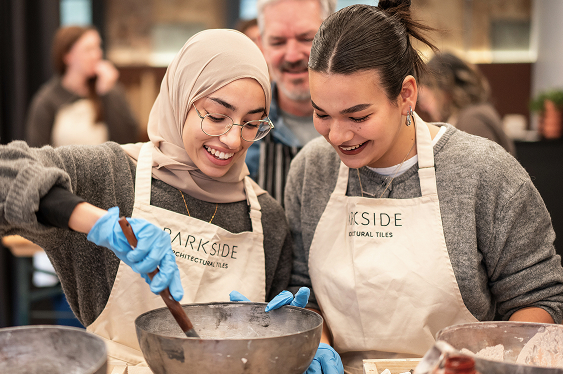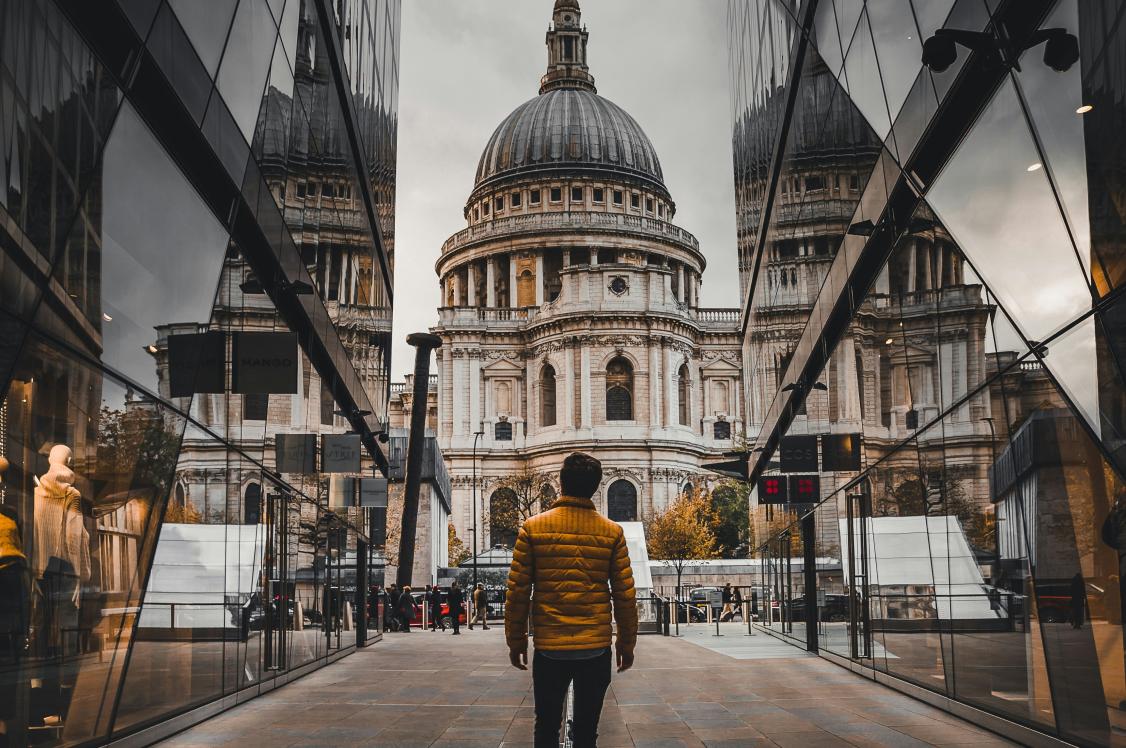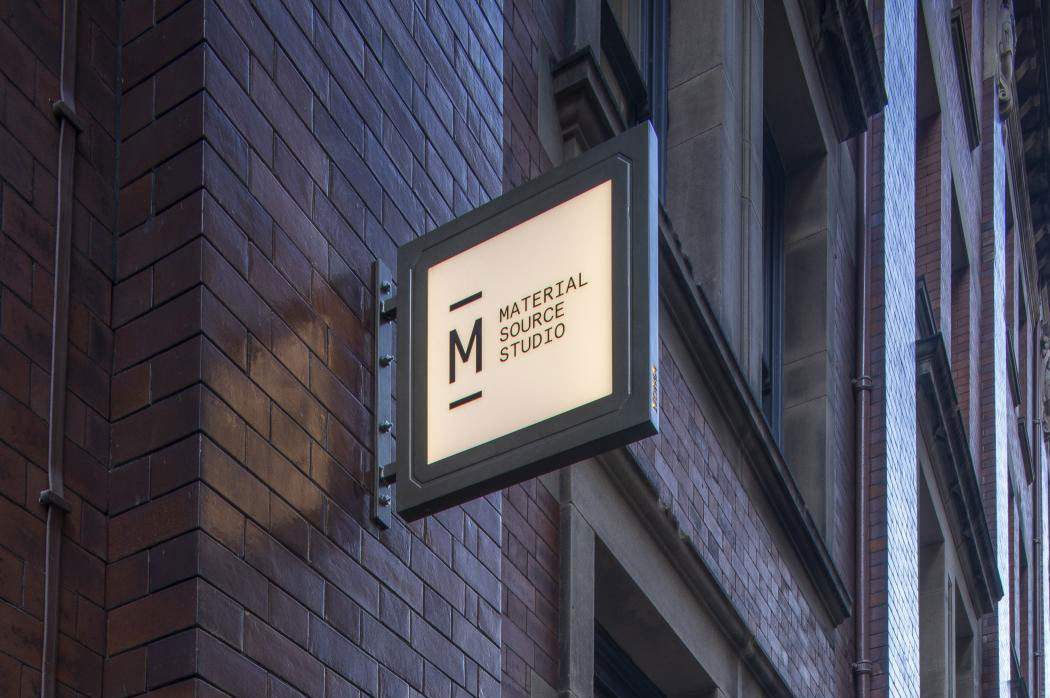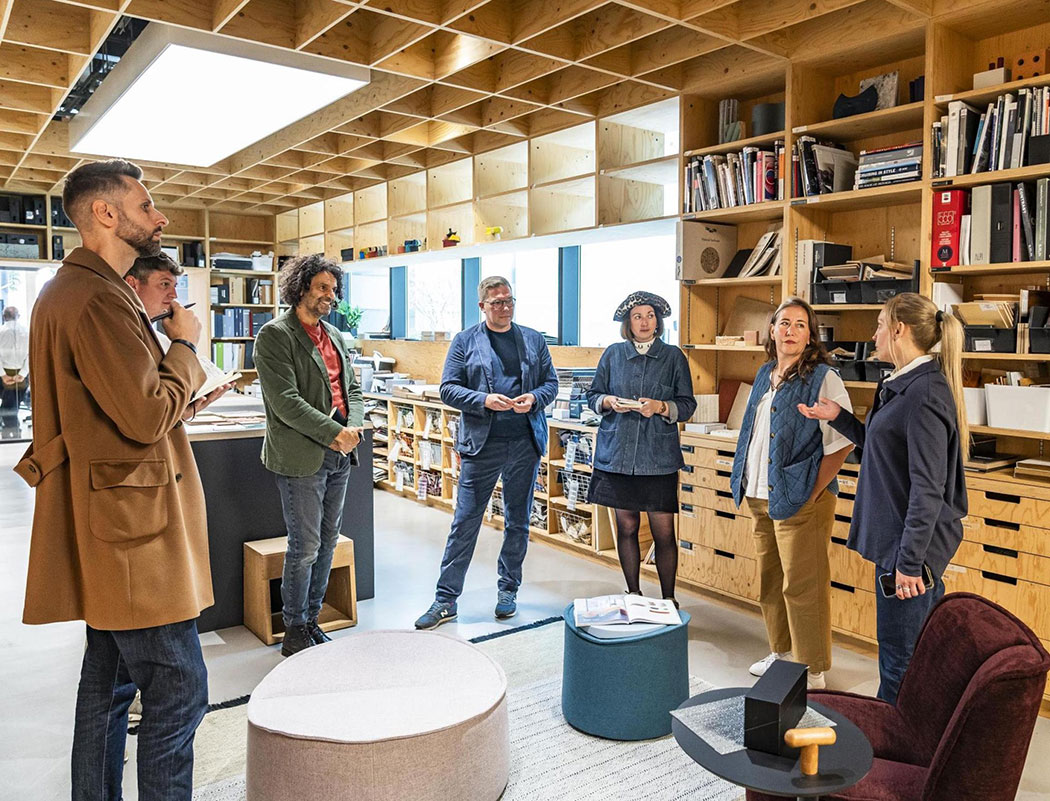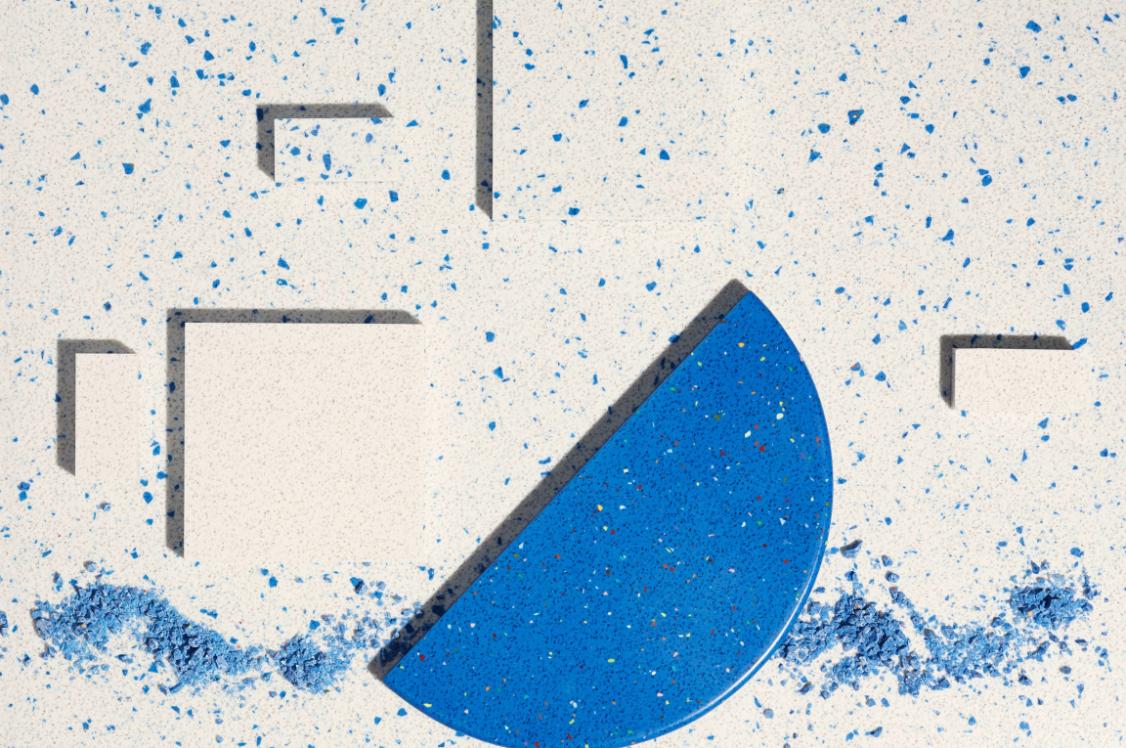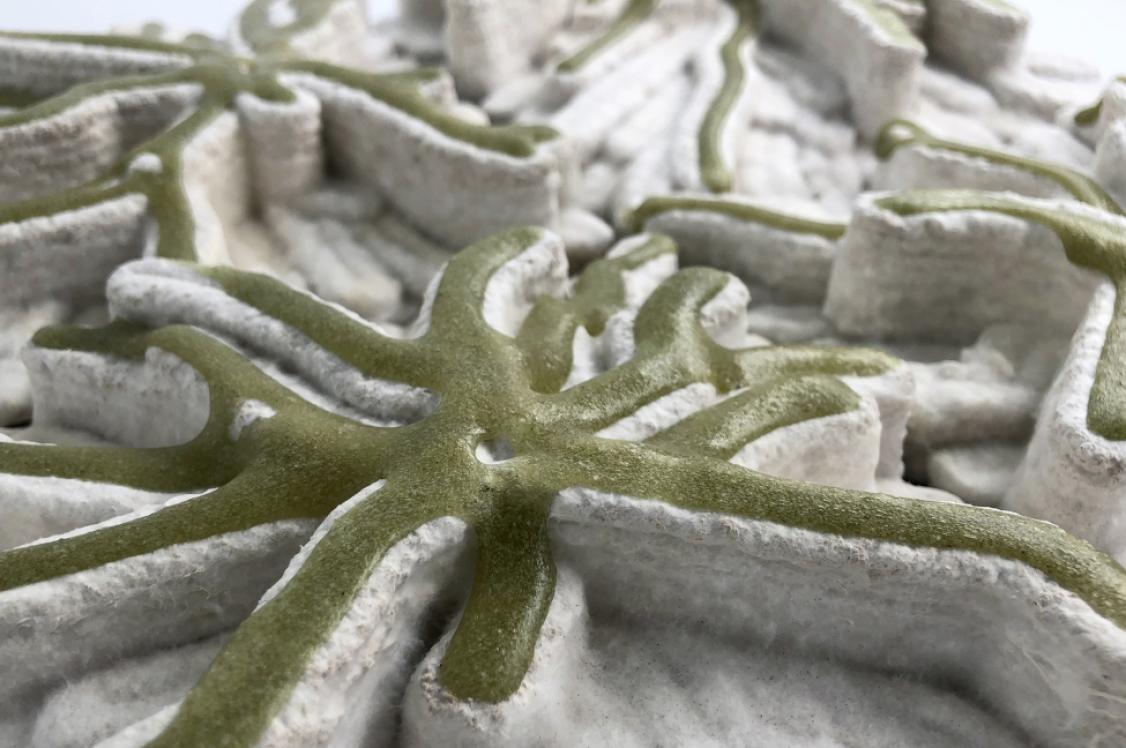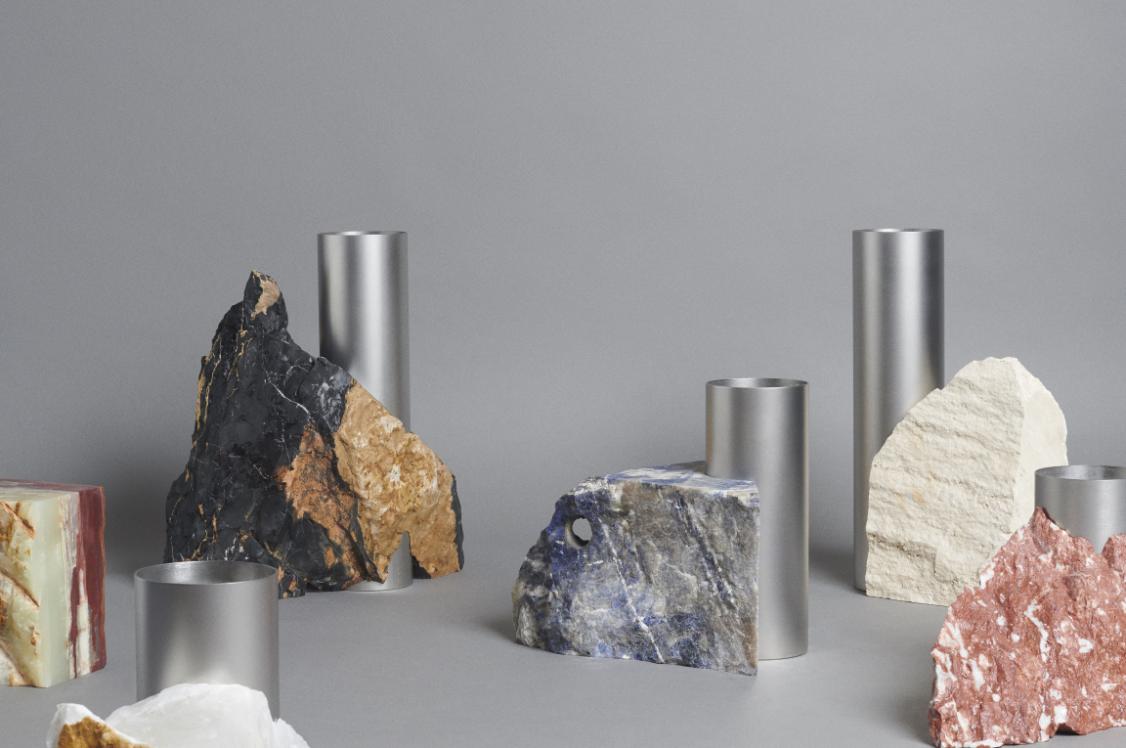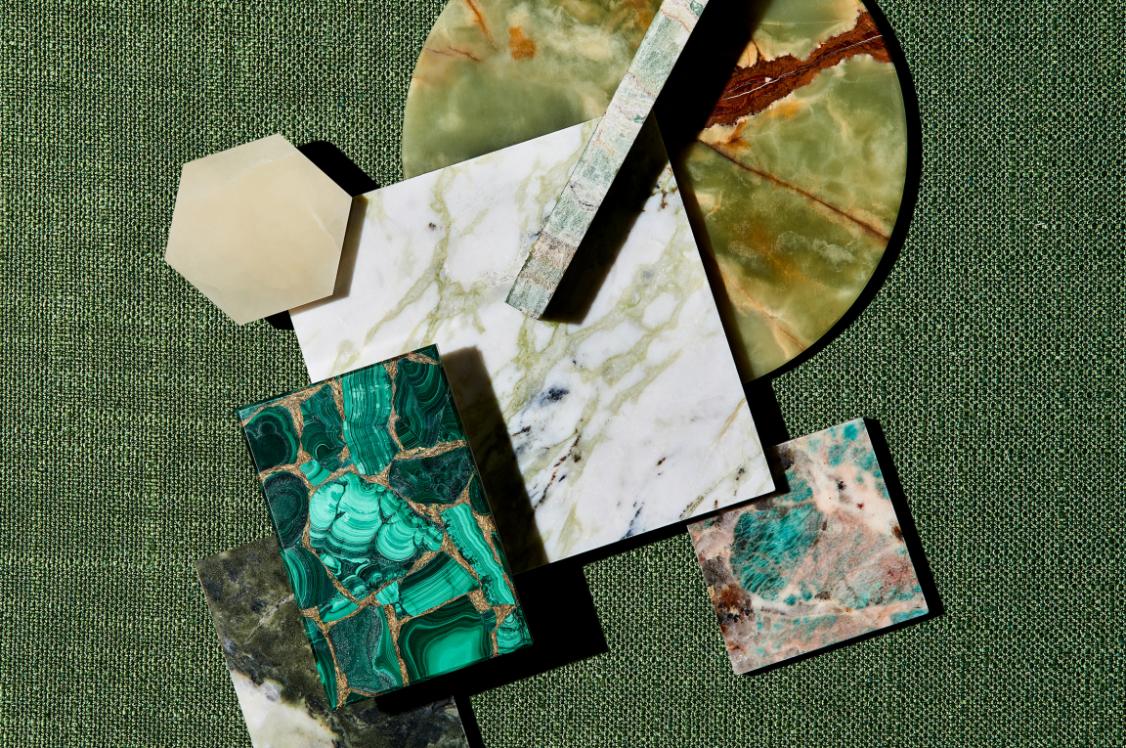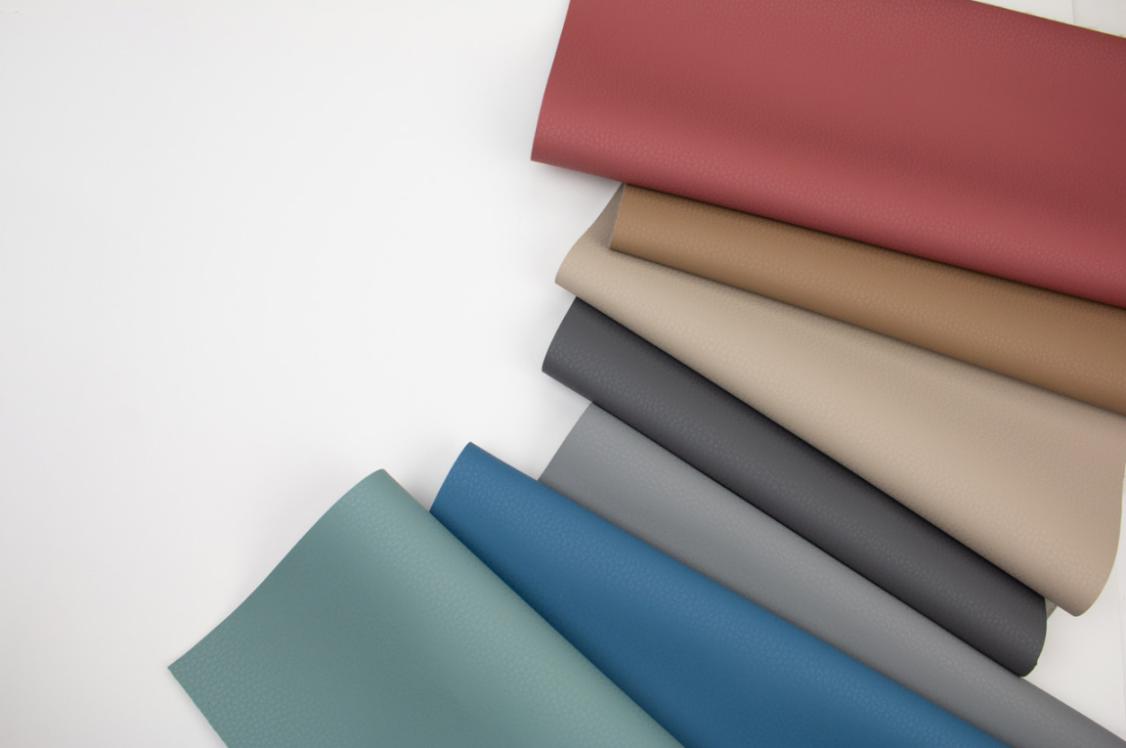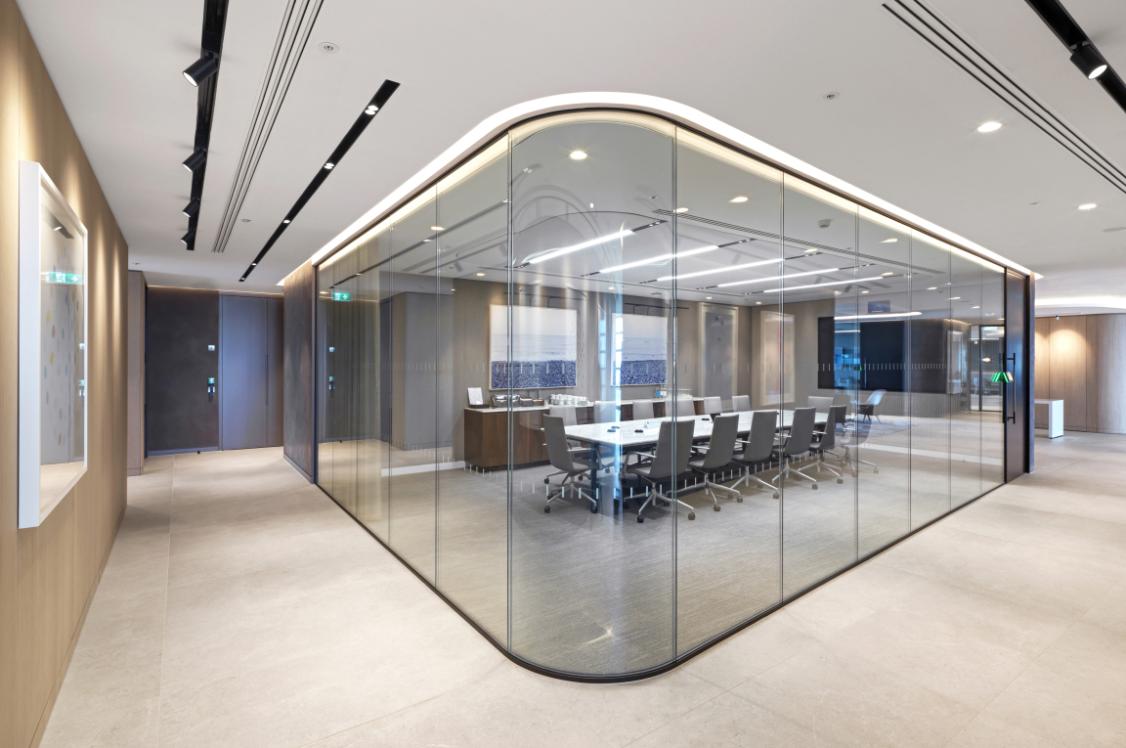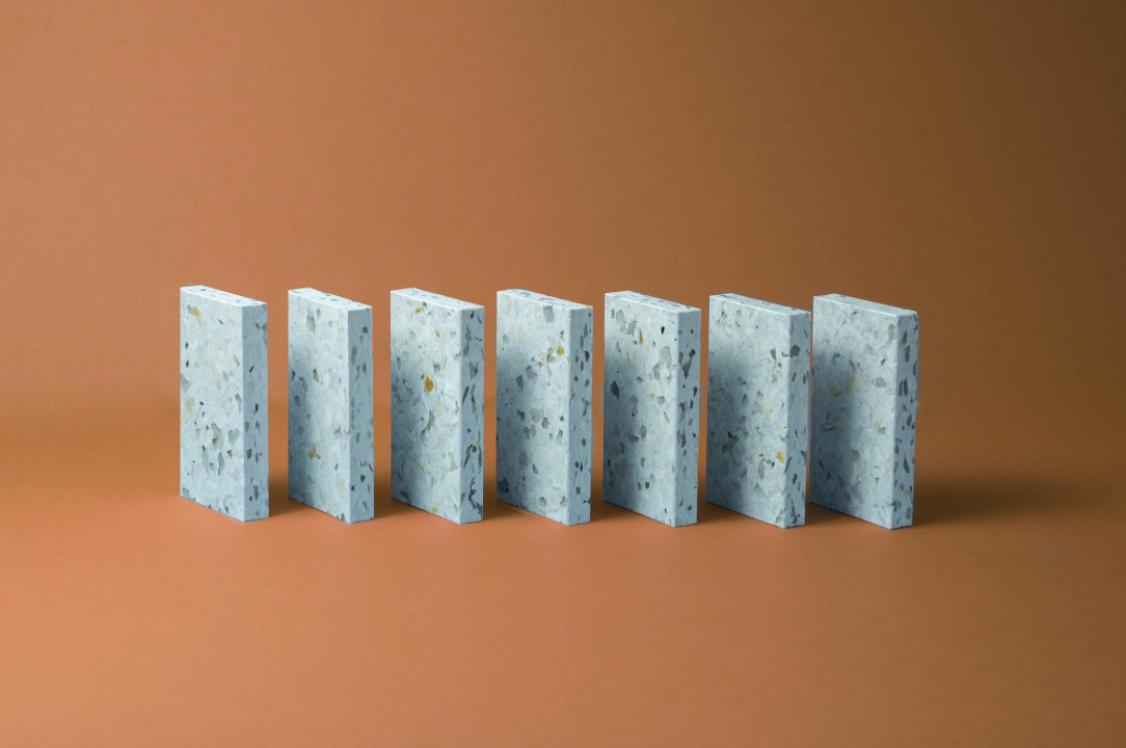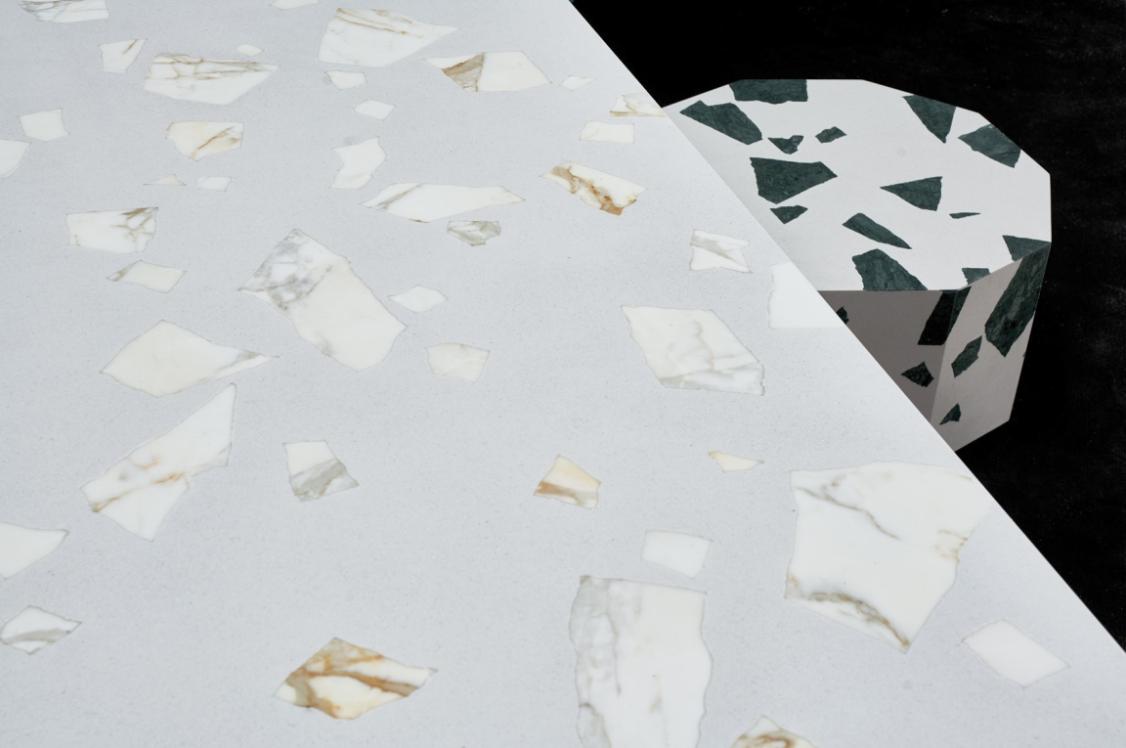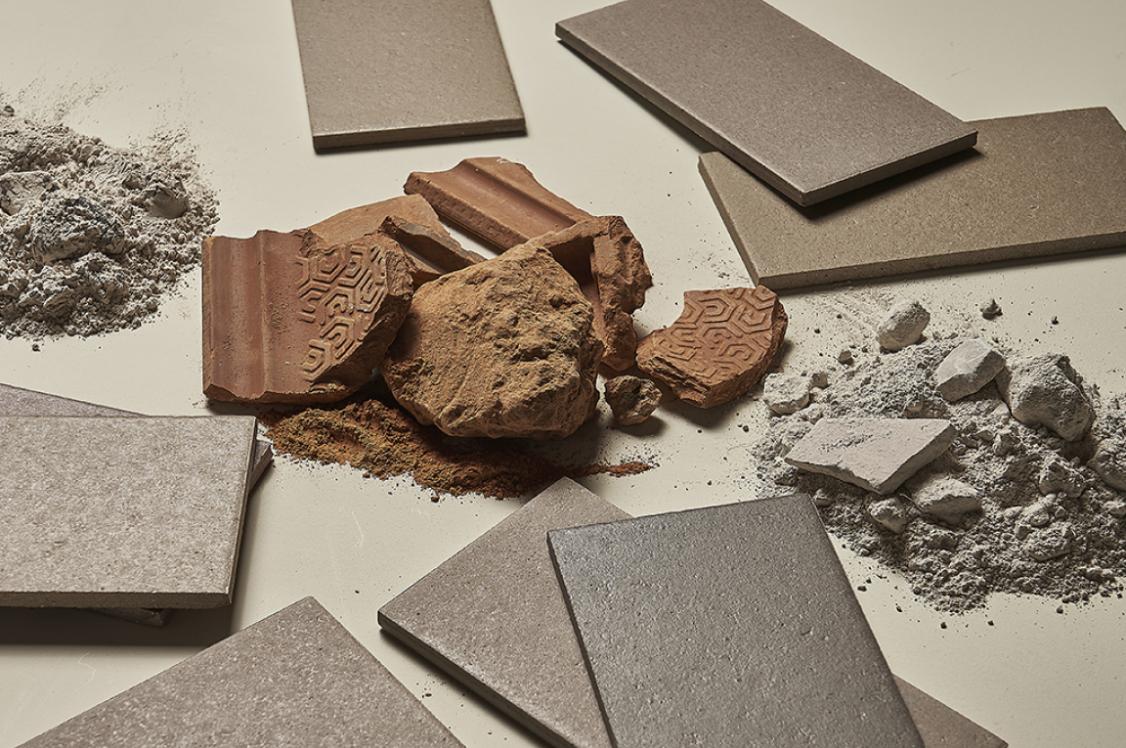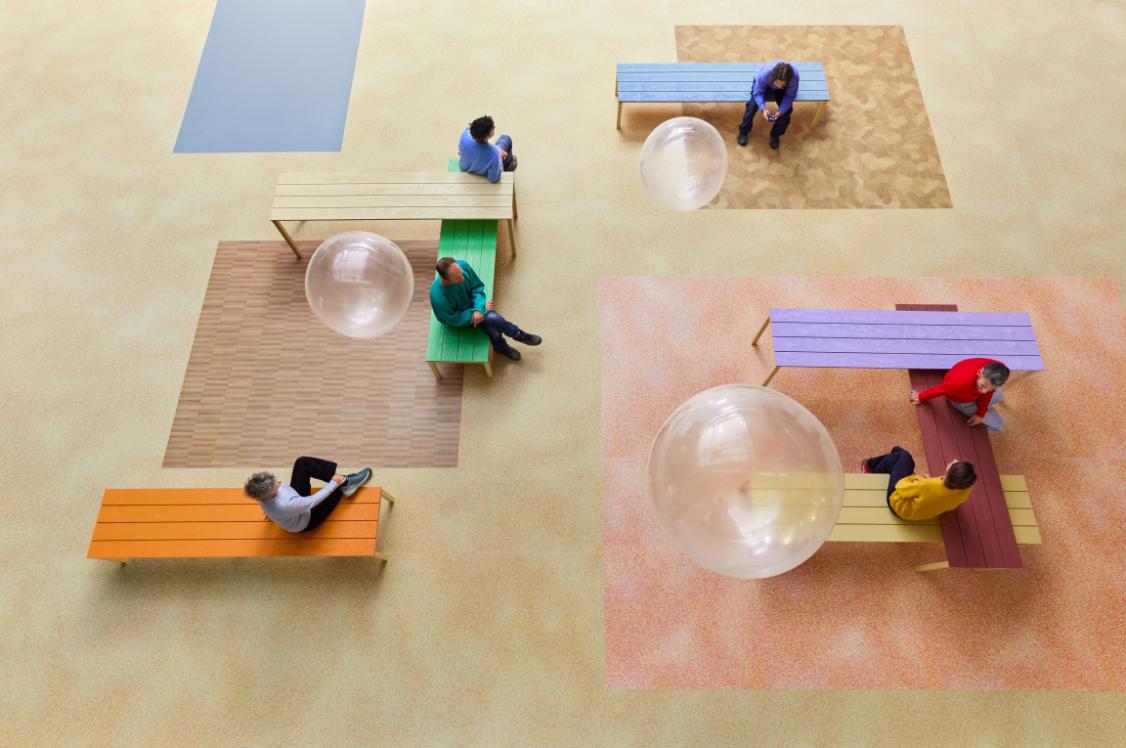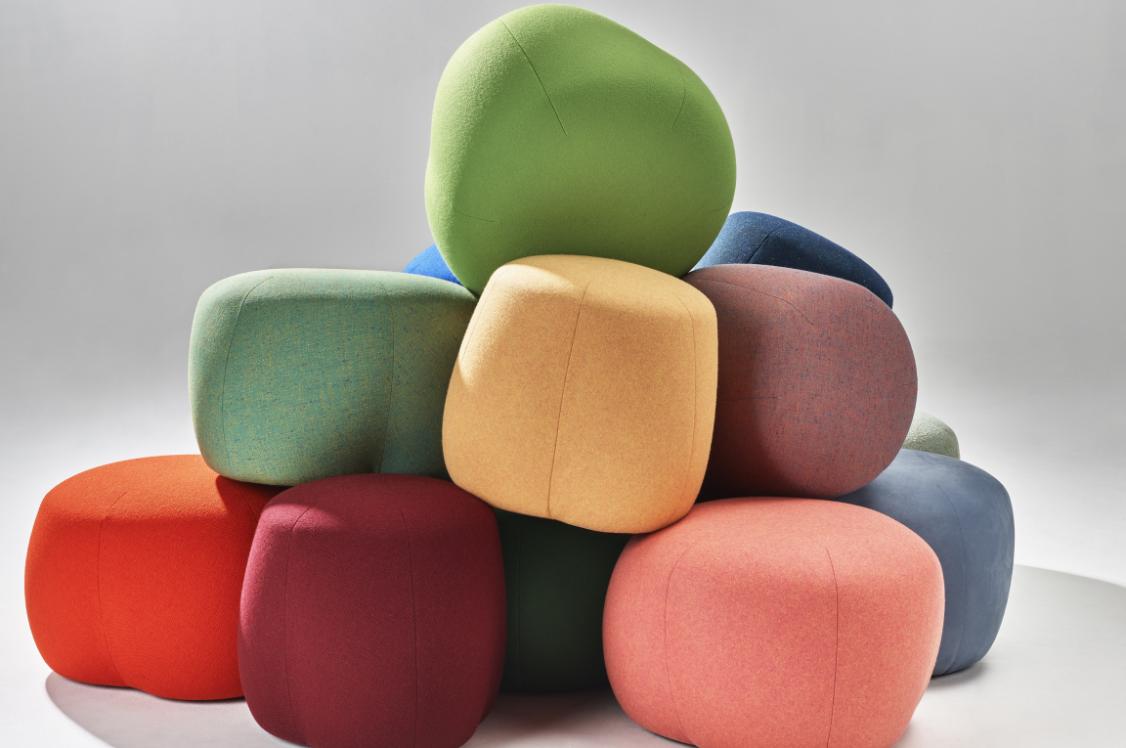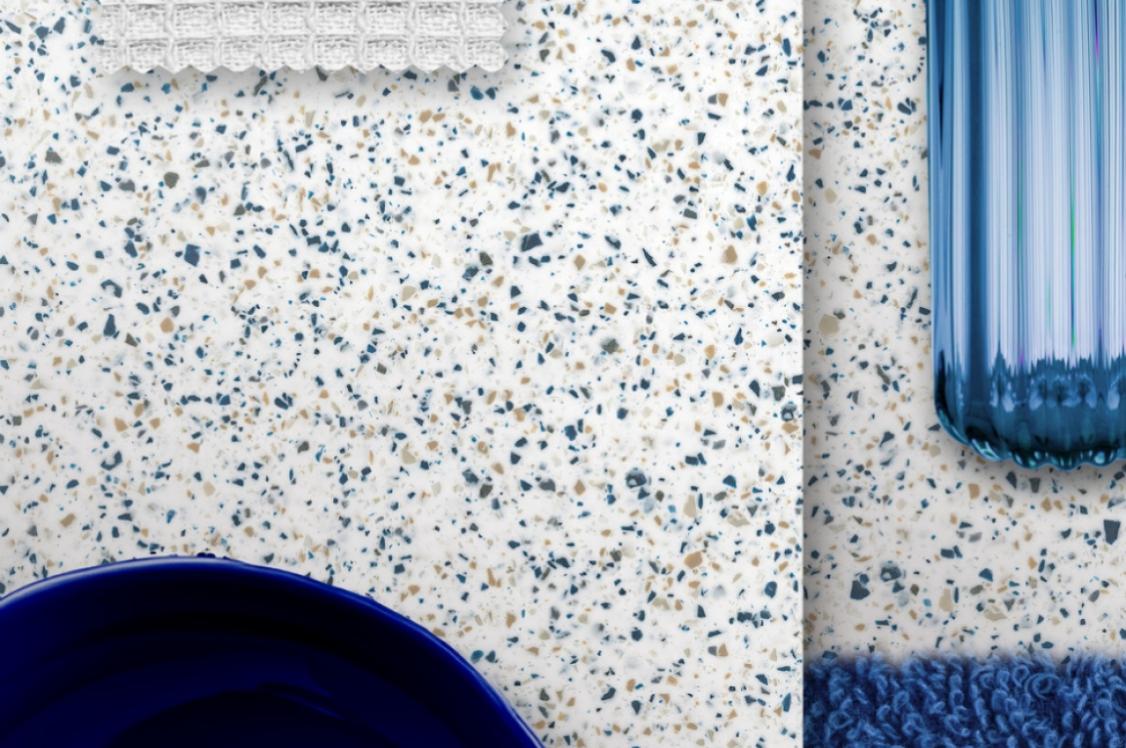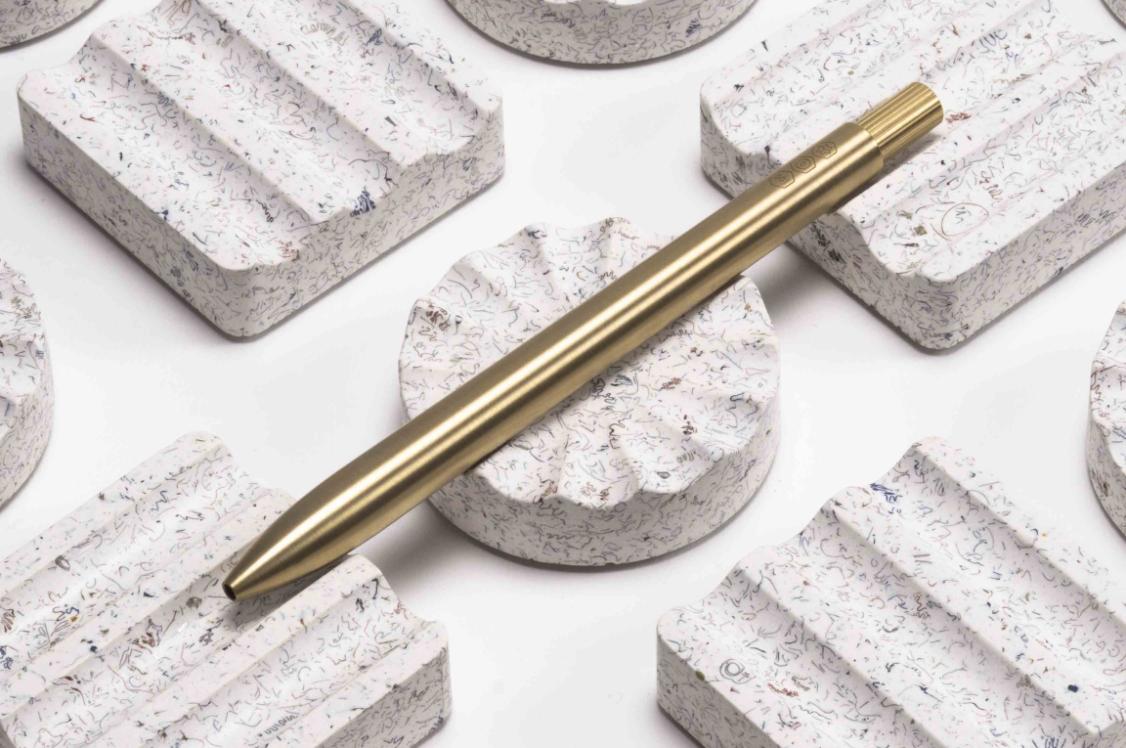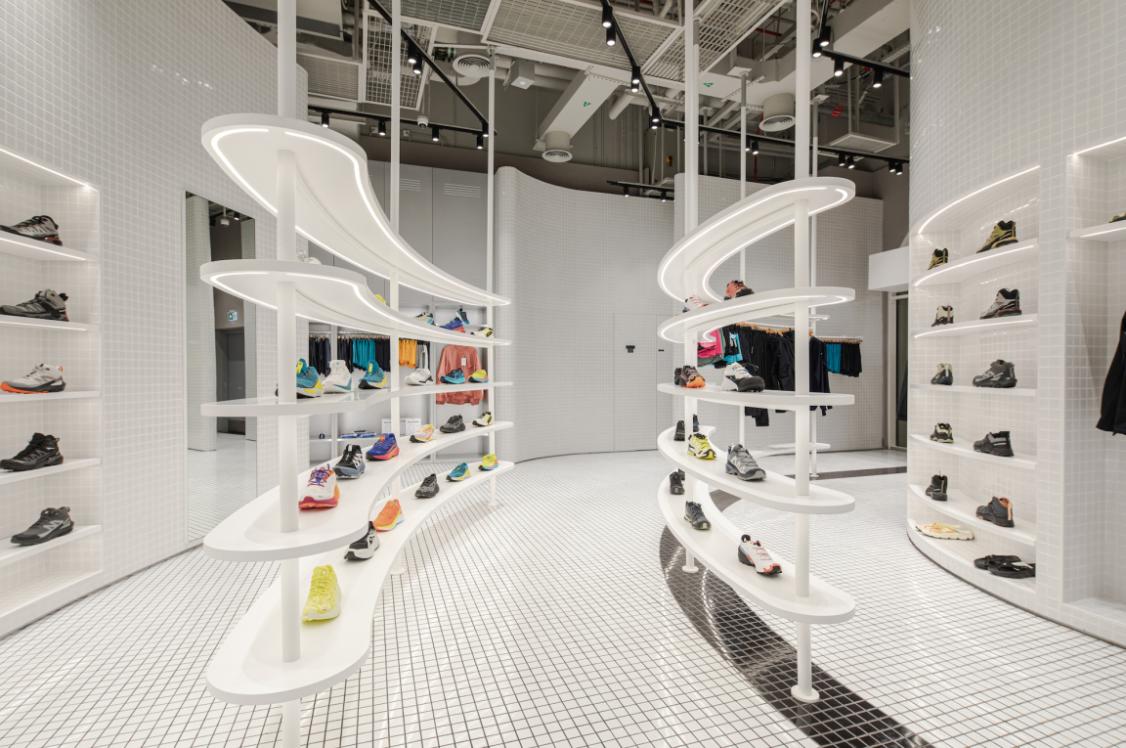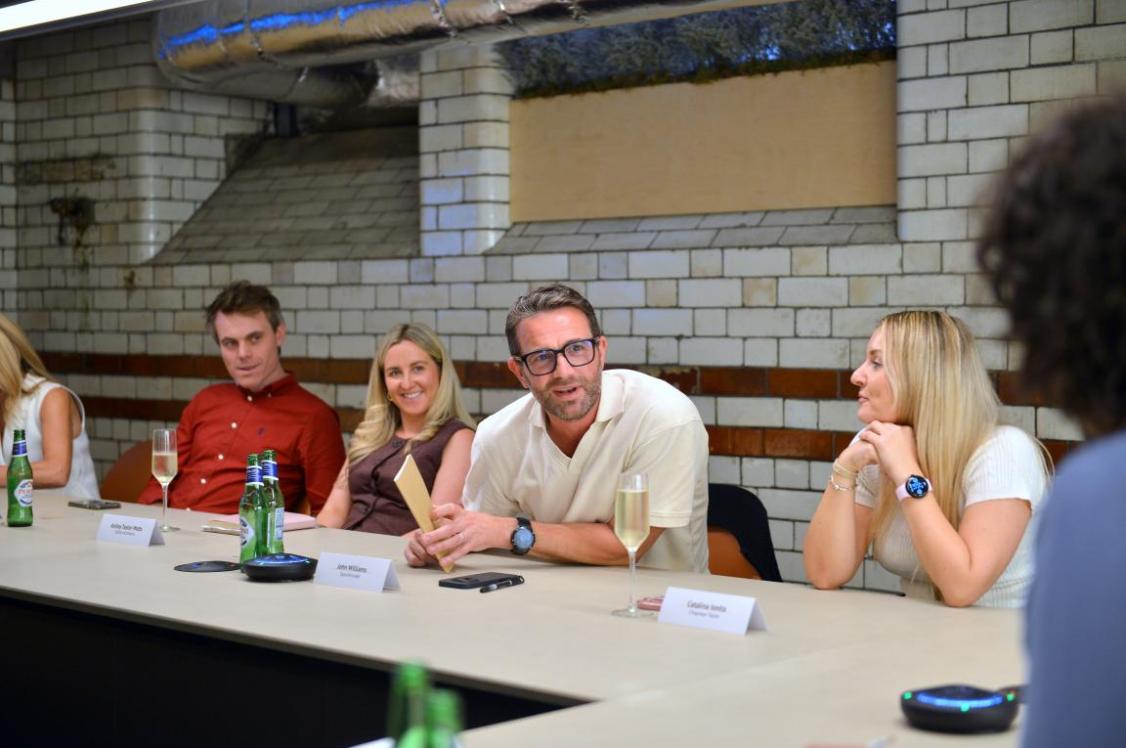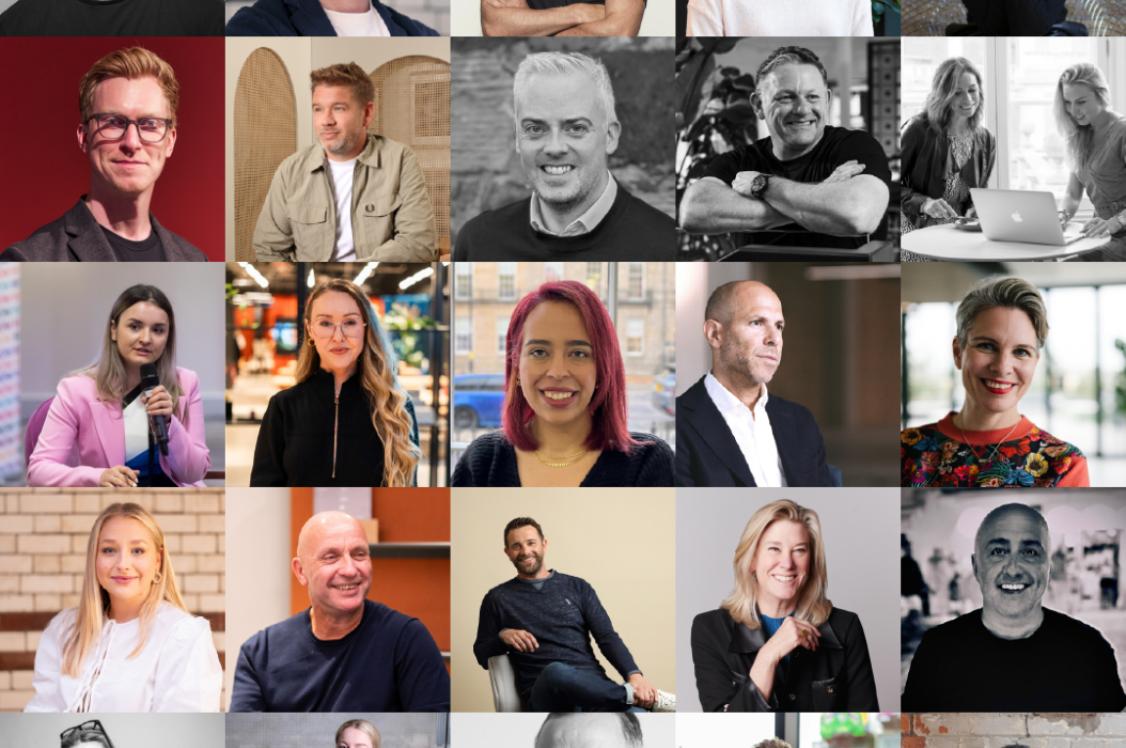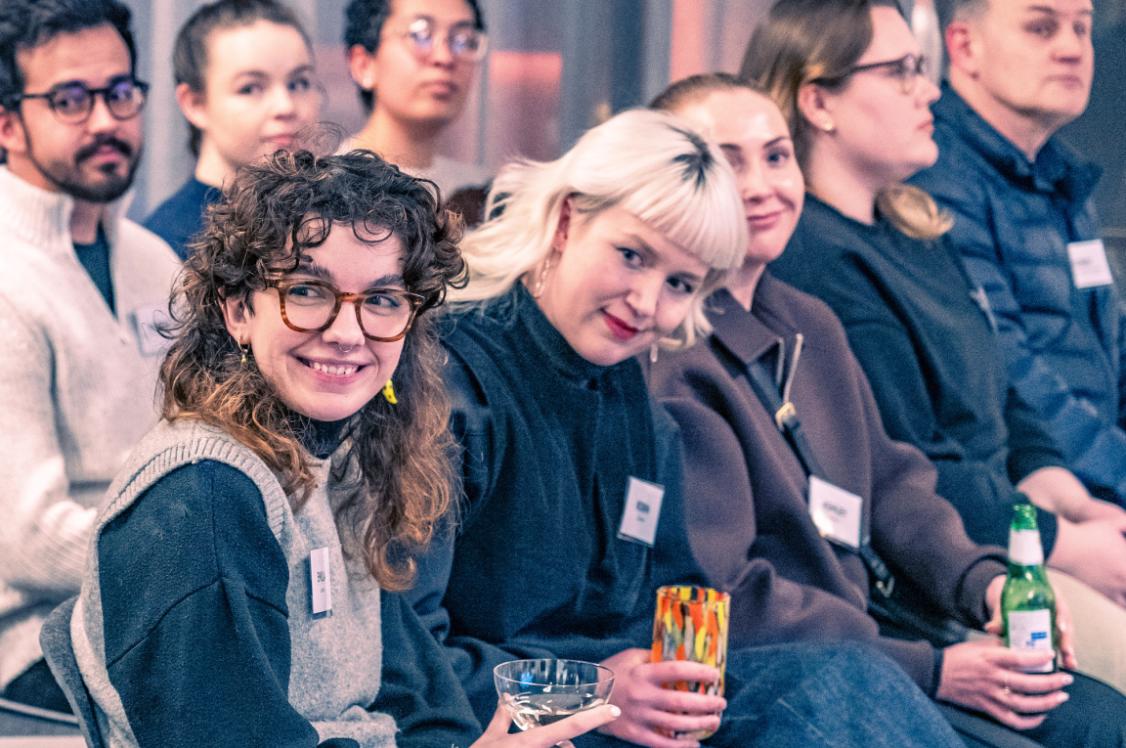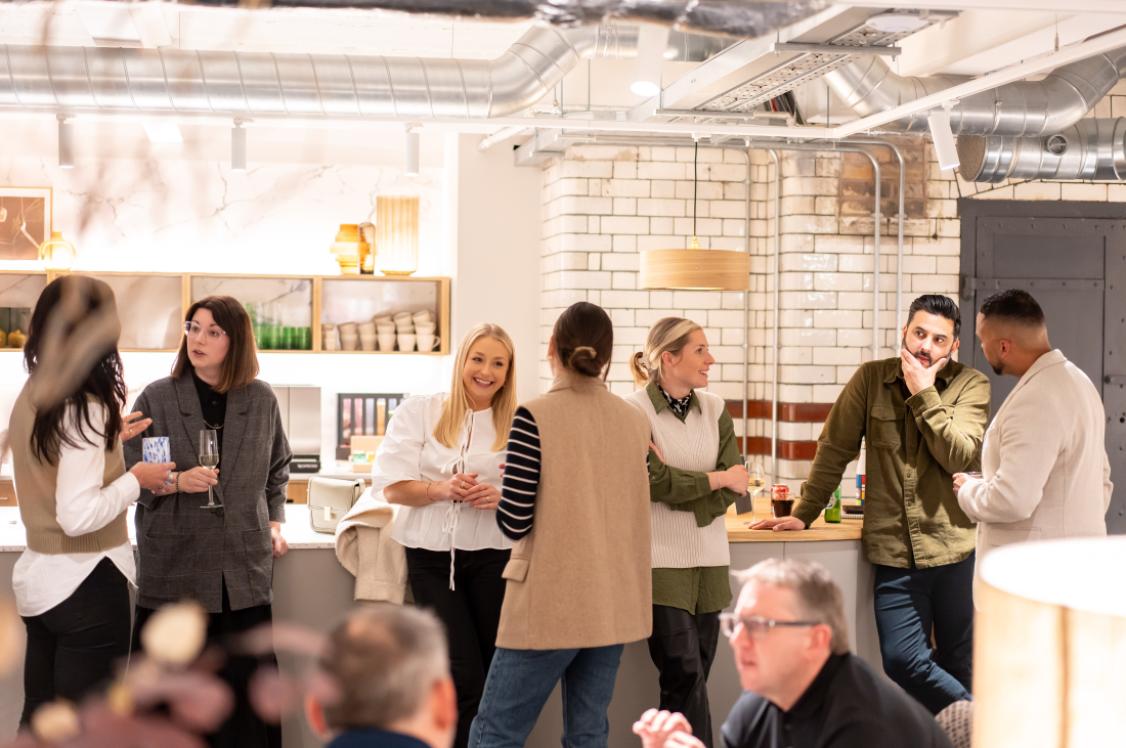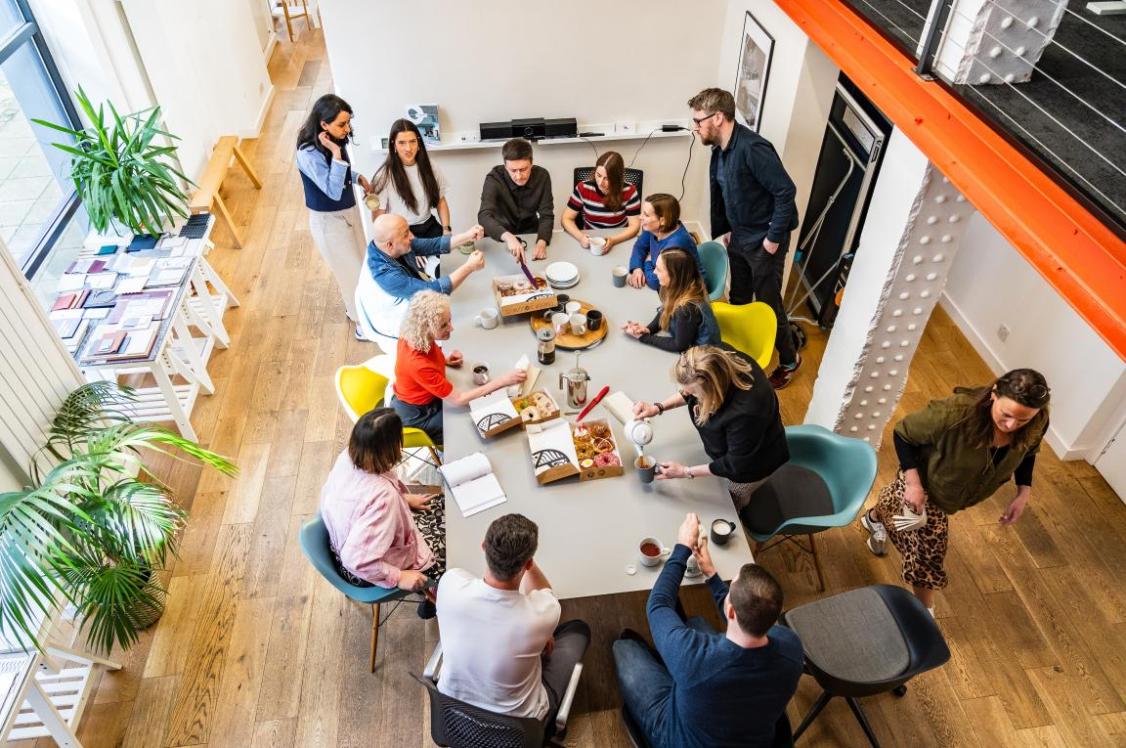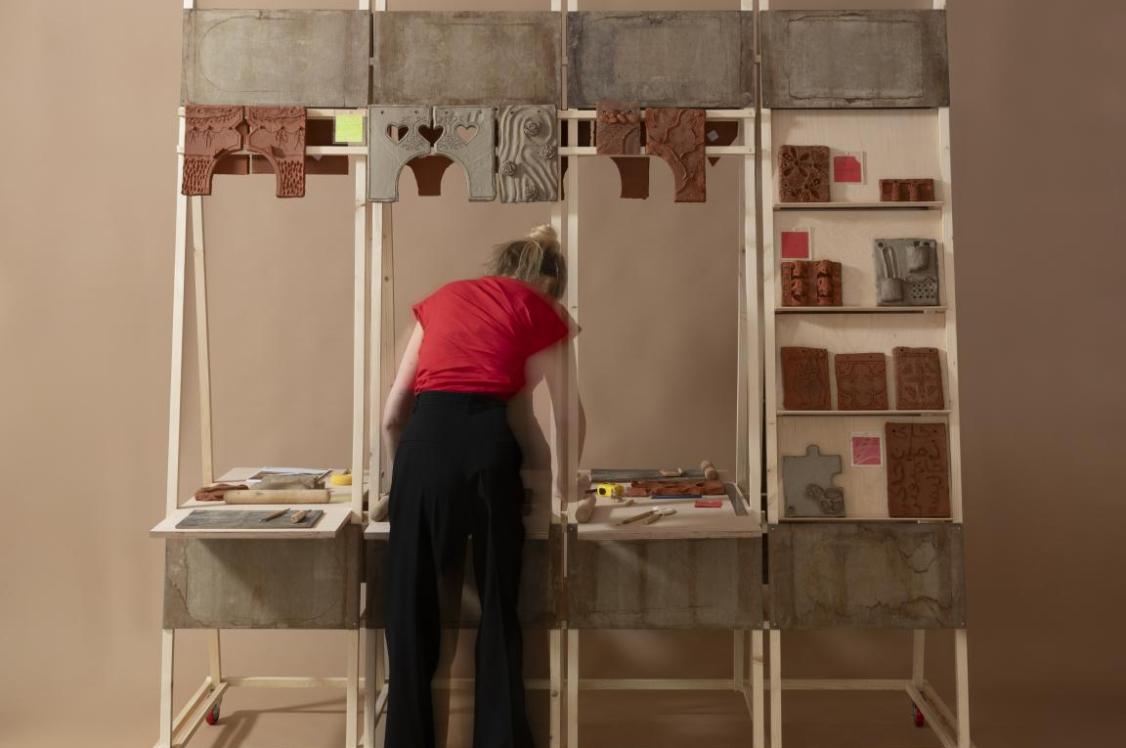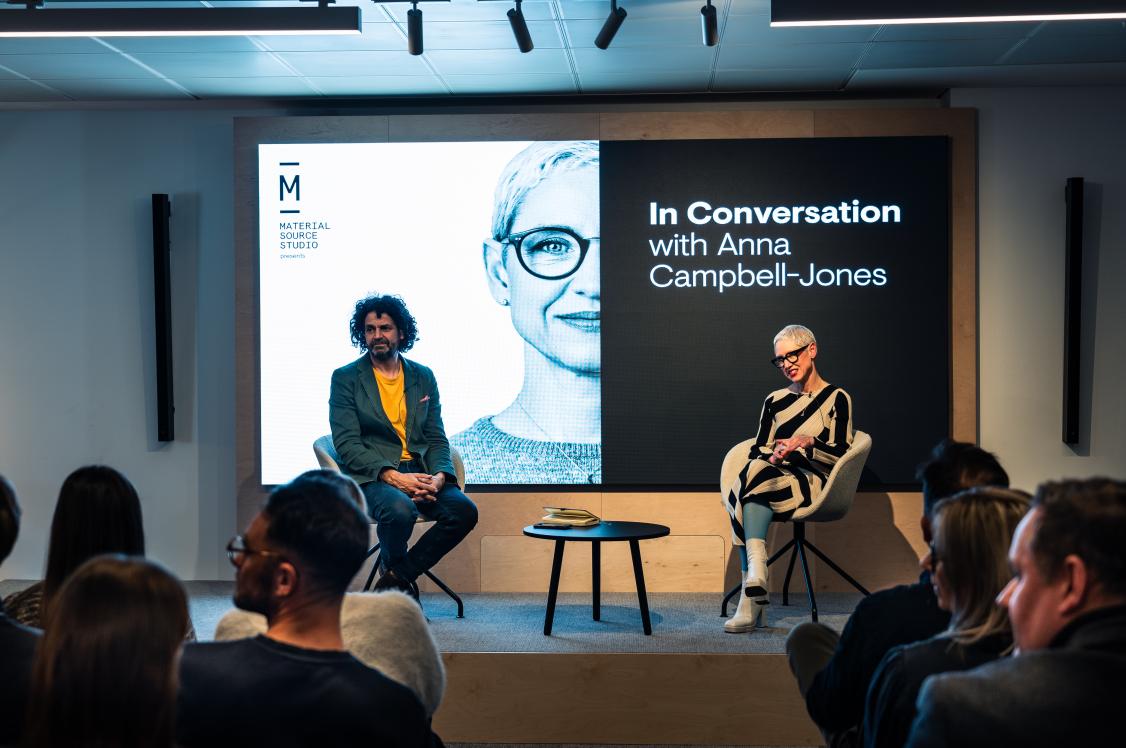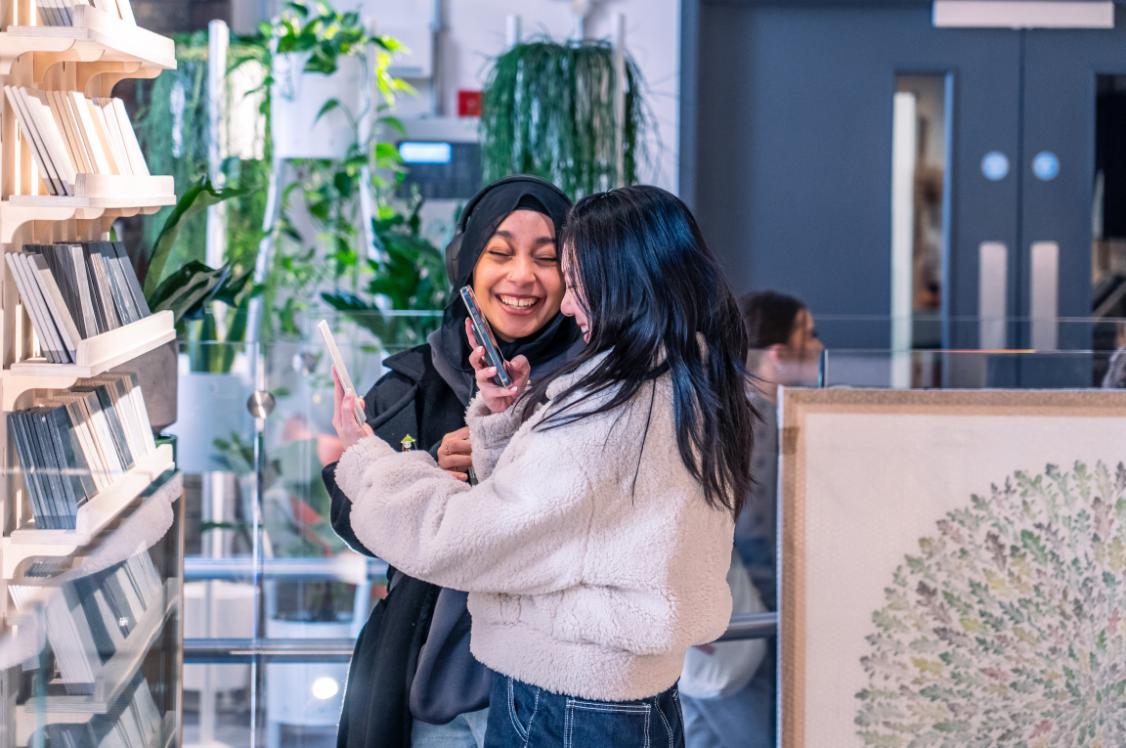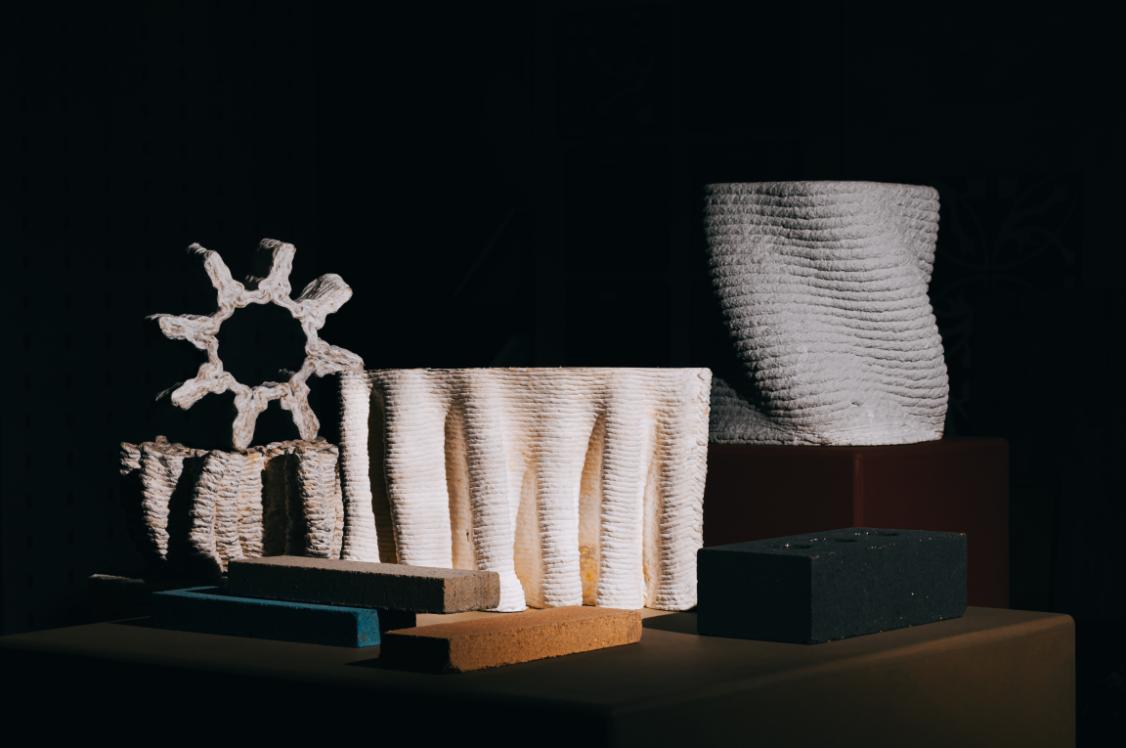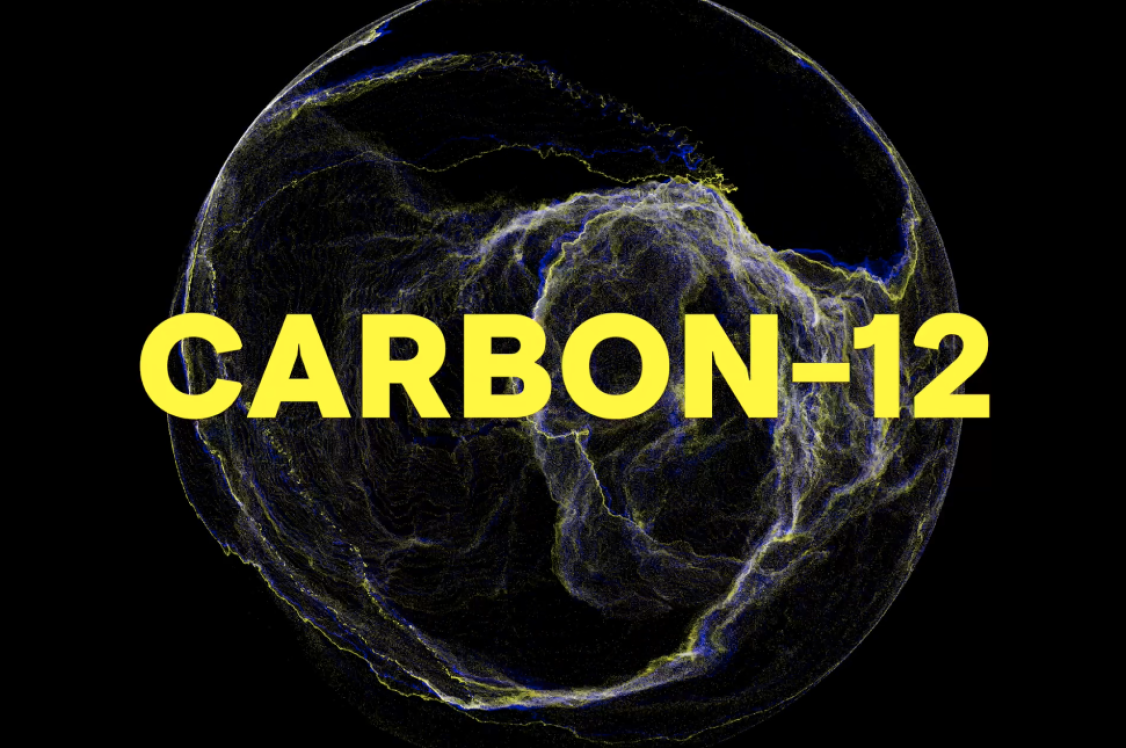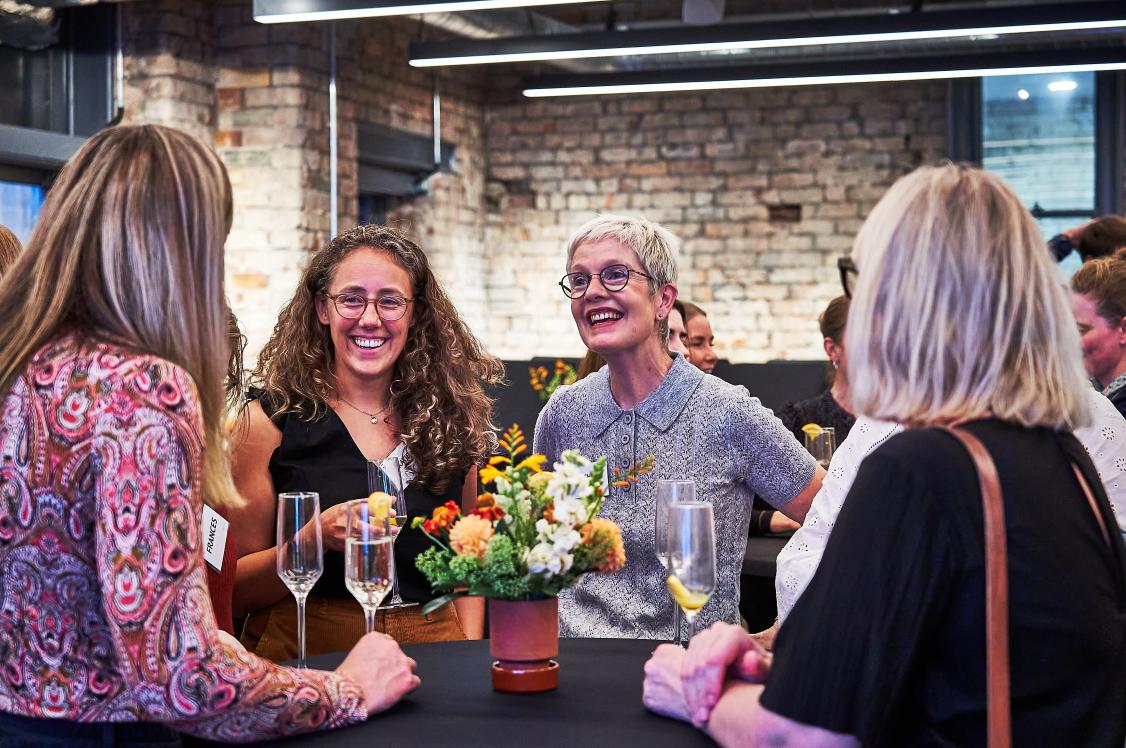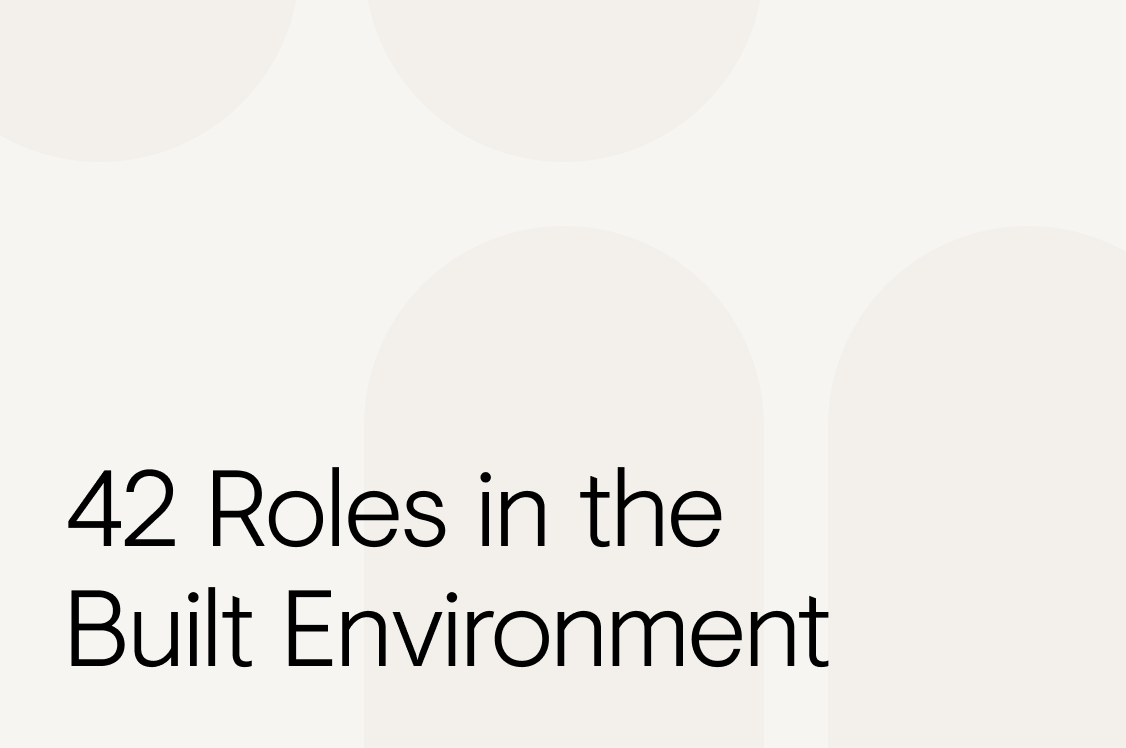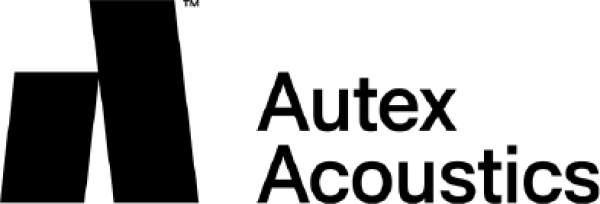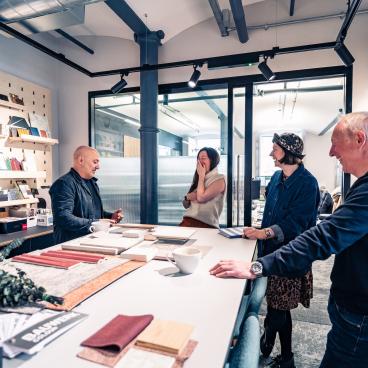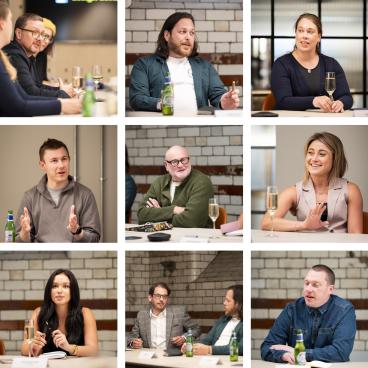AI: A designer's friend or foe?
Perhaps the most polarising topic we've ever covered here at Material Source Studio, at our latest seminar in Manchester, we asked, AI: A designer's friend or foe?
Unsurprisingly, opinions were mixed. From both our two expert panellists, Phil Birchenall, founder, Diagonal Thinking & David Edmundson-Bird, principal lecturer in digital marketing, faculty lead for AI & digital enhanced learning at MMU Business School, in conversation with David Smalley, director, Material Source Studio, who agreed to disagree on some points. And amongst our audience of over 75+ architects and interior designers.
The one common consensus was that while AI's development is occurring at the speed of light, its adoption - particularly in the built environment sector - has not kept pace, by any stretch. There is a world of potential - that's clear. But at what cost to our intellectual property? And to our planet?
There was lots to discuss. So not only did we dedicate an hour in Manchester, but we'll be continuing the discussion with our panellists up in Glasgow in June.
We had questions, you had questions, and there will be plenty more to come, we're sure. For now, here's a summary of the conversation so far...
The advent of AI
By way of introduction, David Smalley asked David Edmundson-Bird when he first wrote down the term 'Artificial Intelligence', and why. "It was in 1991", he replied, referencing a piece of software he had developed at the time - "a decision making system for strategic managers."
In 1994, he thought "AI's not going anywhere" so he "got out of that". A comment that was met with laughter from the audience.
David Smalley then asked Phil to explain his 'sausage blog theory'.
"I speak to a lot of companies who are under pressure to, 'do AI'. And this filters down from board level. It gets passed to marketing because it's a 'digital thing'. Say the company is a sausage manufacturer - they use AI to write a blog about sausages. And the result is, quite frankly, crap. Because it's been asked to do something these people are already good at.
"When the board asks, 'what have we done with AI?' the marketing team reports this back, and at this point, AI is crossed off the agenda - 'we've done it and it isn't very good'. So what I'm saying is less 'sausage blogs'. Let's go beyond using these tools to do what we're already good at."

Credit: Tim Ainsworth
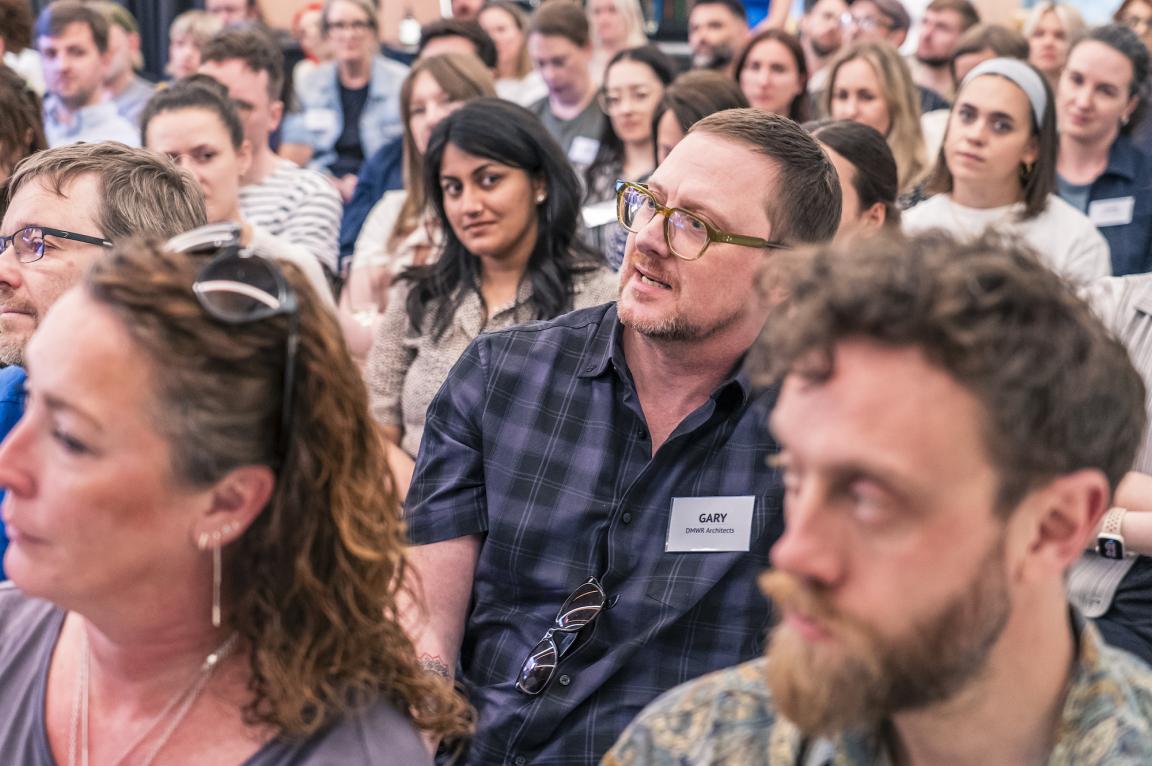
Credit: Tim Ainsworth
What is AI? And, importantly, what isn't it?
AI, like many acronyms and abbreviations, has become an industry 'buzz word'. But on an atomic level, David asked, what actually is AI?
"It's just a piece of software", responded David Edmundson-Bird. "And it's not 'intelligent'. It can't think, it can't feel, and it doesn't do anything 'human'. It is literally the world's biggest probability remix machine."
"It can't think, it can't feel, and it doesn't do anything 'human'." - David Edmundson-Bird
"I nick your way of describing this all the time", added Phil - "generative AI is like really great predictive text."
David asked the audience to fill in the blank to the following sentence, "the chicken crossed the..." - "if you thought 'road' you're a Large Language Model (LLM)", he said. LLMs are a type of AI that processes and generates 'human language', most commonly utilised through the likes of ChatGPT.
"All it does is write down the most probable next word. And it does this by looking at previous words. What's amazing is how fast it is. It looks novel to us, but it's not. It's just remixing every word ever written in real-time."
"Who owns it?" asked David Smalley. There are many brands, answered panellists Phil and David. From Google to OpenAI. While Google is commercial, OpenAI - "as of this weekend", Phil explained, "has switched its corporate structure. It's a 'community interest company' now."
"Change is happening all the time when it comes to AI, isn't it?" host David suggested. "Even in the last two-weeks the imagery has developed hasn't it?"
"Six-weeks ago, we'd have said that ChatGPT 'couldn't do fingers'", Phil said, in reference to the software's limitations around the generation of images. "But the image generational update that happened a couple of weeks ago means it can now 'do fingers'.
This "rate of change is anxiety-inducing", he added. "There's major developments on a weekly basis happening across all platforms - but when I speak to businesses, most of us are grappling with the status quo. And that gap will get wider."
David Edmundson-Bird suggested that, as humans, we can't comprehend that level of change. "By 2025, it was predicted that the rate of change with AI would equal that of the entire Internet in a day. And I think we're there", he said.
Looking 10-years ahead then, said David Smalley..."can you not even imagine that?" - "No", answered both Phil and David. "It's beyond our comprehension."
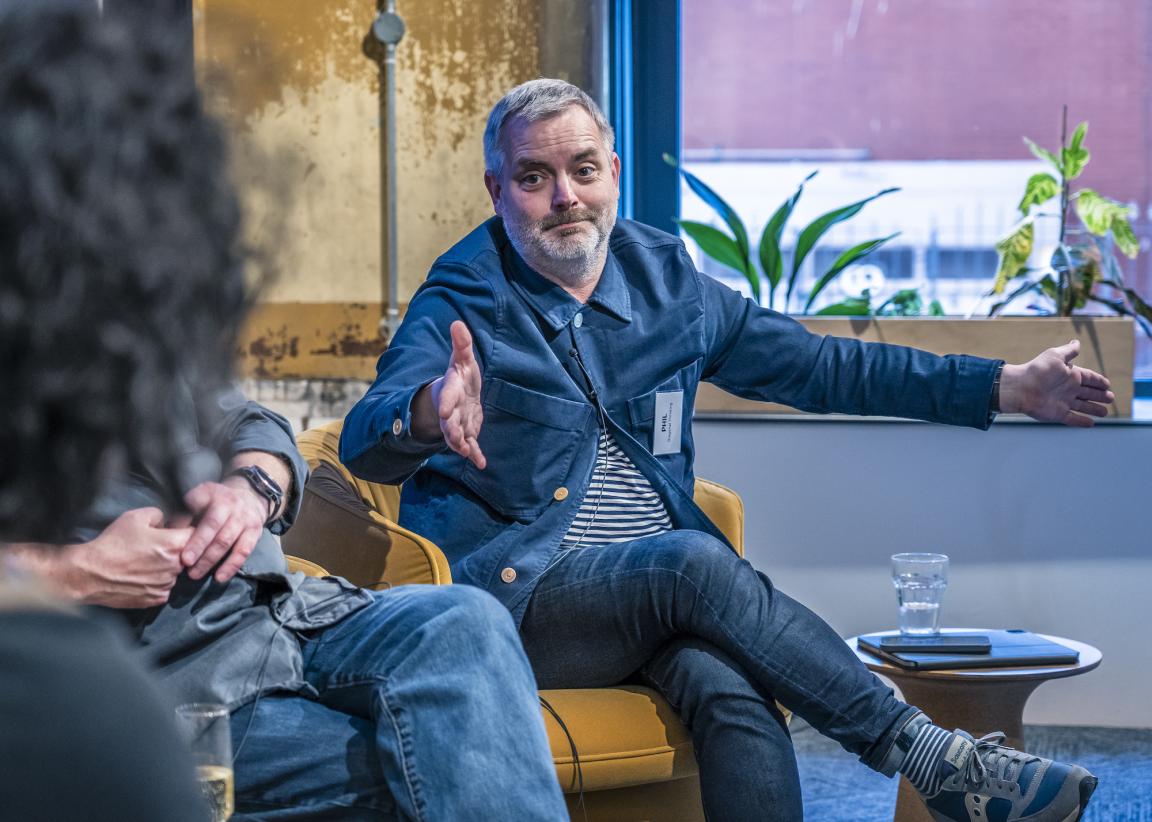
Credit: Tim Ainsworth
When asked by students if AI will "ever be 'intelligent'?" David responds "No". A point Phil also agrees on. "It can do incredible things, but it's not thinking. It's the illusion of thinking."
Milan Cvetkovic, sales transformation & business development specialist, Agua Fabrics, asked from the audience, "Why are you so certain that AI will not develop intelligence?"
"I could go all philosophical and say it's because it's not carbon-based", answered David Edmundson-Bird, "but it doesn't have 4 billion years of evolution behind it, and it doesn't experience.
"It's just really good maths", David added. "It cannot come up with anything original."
"It can do incredible things, but it's not thinking. It's the illusion of thinking." - Phil Birchenall
Looking specifically at how businesses can utilise AI, David asked, "how can it help organisations?"
Phil highlighted Deep Research from ChatGPT, which can be used for carrying out market analysis, for example. "I've recently worked with a brand using Deep Research and in 20-minutes it had compiled a SWOT analysis of their market", Phil shared. "The creative director of said brand thought it was incredible. The results had come from a scouring of 50-100 different sources in a matter of minutes."
A 15-20 page report was produced, which Phil caveated with the comment that not every line was completely on the money, as it were, but for the scope and timeframe it's an undeniable feat that could not be undertaken by a human.
David Edmundson-Bird shared a similar example, using Perplexity - a free AI-powered answer engine that promises to provide "accurate, trusted, and real-time answers to any question" - he inputted a client brief and received 50-pages of "really good intel" back.
He cross-referenced the information on other AI platforms and 90% was the same across the board. "My client said it was 3-months' work done in minutes."
"The key point here", David Smalley said is, "AI is for the grunt work?"
"It's for time-intensive work that has no value", David Edmundson-Bird replied. But - experts are still needed to verify, he suggested. "They can take that and then do something really valuable, and then spend more quality time with clients, for example. The stuff only humans can do."
A point Phil wanted to raise in particular for the architects and designers in the room was that AI models can process images as well as generate them. This makes them ideal for pulling together reports, pitches, and tenders.
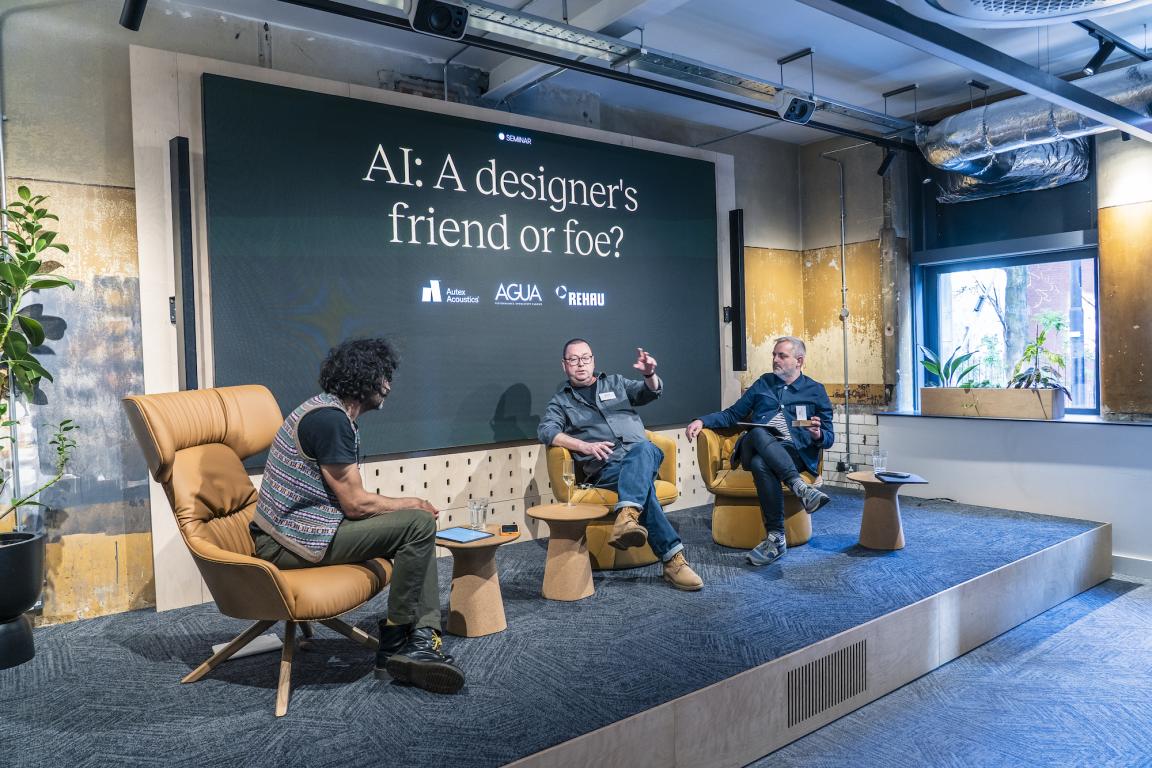
Credit: Tim Ainsworth
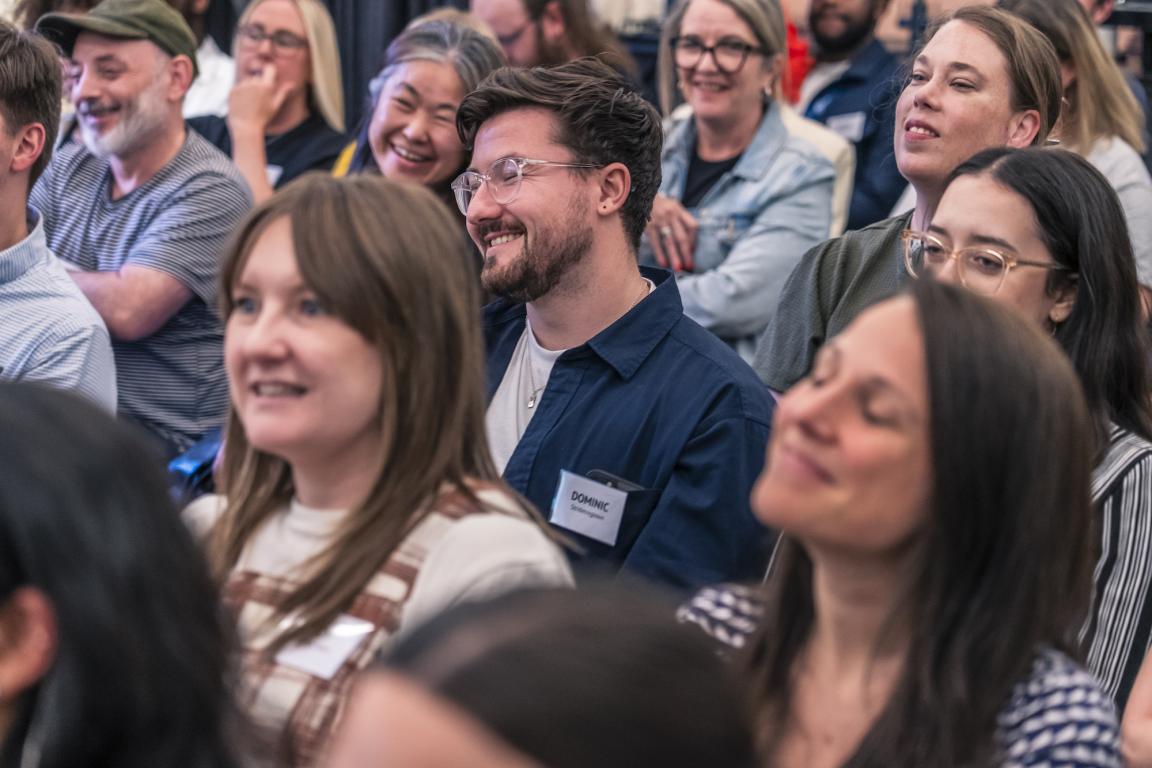
Credit: Tim Ainsworth
The perception of adoption
From the discussion so far, AI appears best placed within a person's day for taking away the mundane, time-consuming tasks. But this rarely grabs the headlines when AI is discussed in the press, or on social media. It's met with a "negative buzz" as David Edmundson-Bird put it. Especially where a person has used it to aid their creative work.
David Smalley asked, "Does the use of AI impact on our perception of someone's ability?"
The "negative buzz" that panellist David speaks of, is, he said, in response to those who "don't know how to use it".
"The people who get the maximum value out of AI are the people who are absolute experts in their discipline", he said. "It's garbage in, garbage out."
"AI prompts" are the input that's provided to a generative AI model to guide it to a desired output.
"It's garbage in, garbage out." - David Edmundson-Bird
Midjourney, which, according to its website, comprises - 'an independent research lab exploring new mediums of thought and expanding the imaginative powers of the human species' - is best-used by photographers, David suggested. This is because they know exactly what they're looking to achieve.
The useful shift that's occurring, David believes, is a move away from being "inputters" to being "quality assurers".
And considering life outside of work, Alejandra Heap, architectural designer, Street Design, asked a question from the audience about the younger generations, "How do we support children in developing their creativity and imagination away from AI?"
Phil came into AI through building a maths tutor for his daughter. And he believes that it needs to be embraced in the right way. That it isn't just an "input output machine".
"It can be a brilliant coach or mentor", David Edmundson-Bird added.
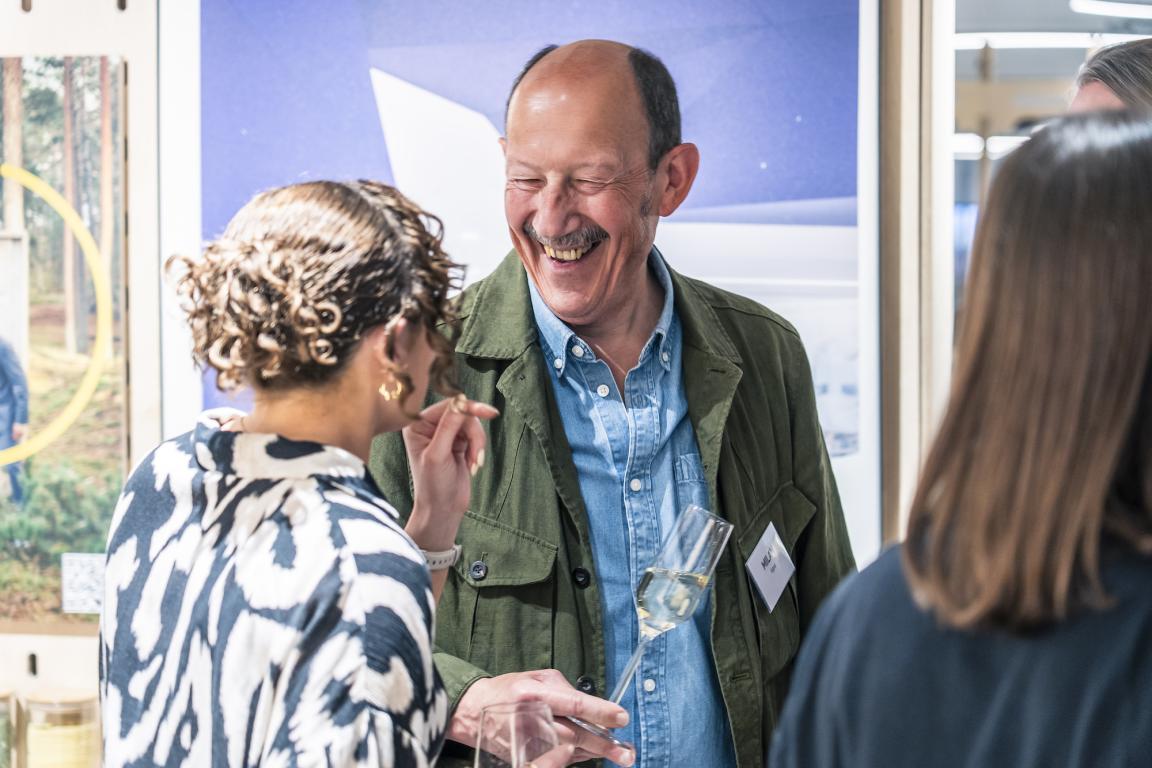
Credit: Tim Ainsworth
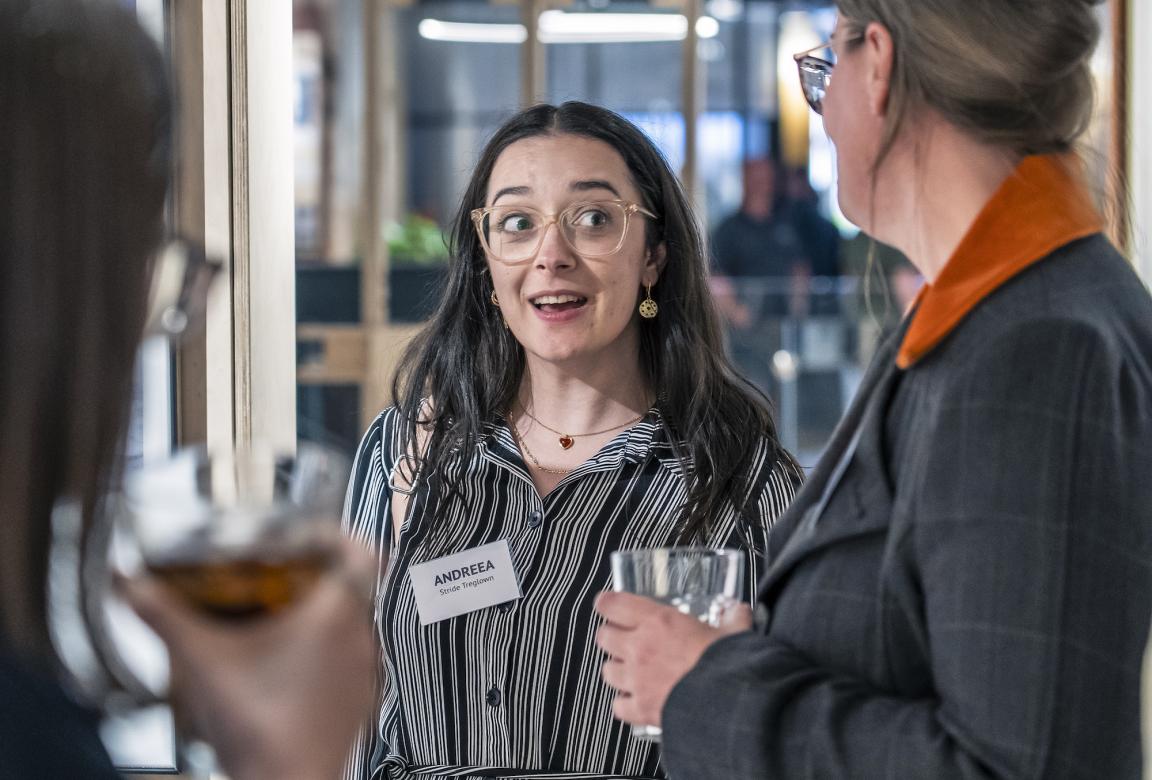
Credit: Tim Ainsworth
People & planet
Amid the concerns that surround AI, humans are just one part of the overall picture, David Smalley flagged. There are worries about the impact it's having on the planet too. The panel were asked to share their thoughts on this.
"I'm an advocate of 'responsible AI'", said David Edmundson-Bird. "It's like anything - you've got to look at the impact of your work on the planet."
A basis of comparison, he shared, can be effective in making a conscious decision around whether or not to use AI in a specific instance. "If you consider a reasonable sized prompt (the likes of ChatGPT) it would use roughly the same amount of energy as charging your phone overnight. The amount of water needed to cool the server down is around half a litre." This water is non-recyclable, David adds - it's lost to the atmosphere - there's no closed loop system.
This is, of course, variable, depending on the length of prompt, and whether the 'training' of the model has been done. This refers to the process of teaching a machine learning model to recognise patterns and make predictions - as panellist David explained earlier in the chat - to ultimately perform tasks in a human-like way.
Phil agreed. "We have to take a longer look at what we're doing in an organisation to see how the use of prompts affects the overall picture. If you have a wireless router switched on for 30-minutes then that's burning through the same amount of energy as a reasonable sized prompt", he commented.
The training period is the most energy intensive, David told us. And much of that has already taken place.
Isla Wishart, architect, Corstorphine & Wright, asked whether, in light of the influx of data centres around the world to support AI activity, this should be stated as part of the Net Zero data?
David Edmundson-Bird thinks yes - "We have to start putting this data in. And if we don't see it, perhaps we should be suspicious of that particular participant in our supply chain."
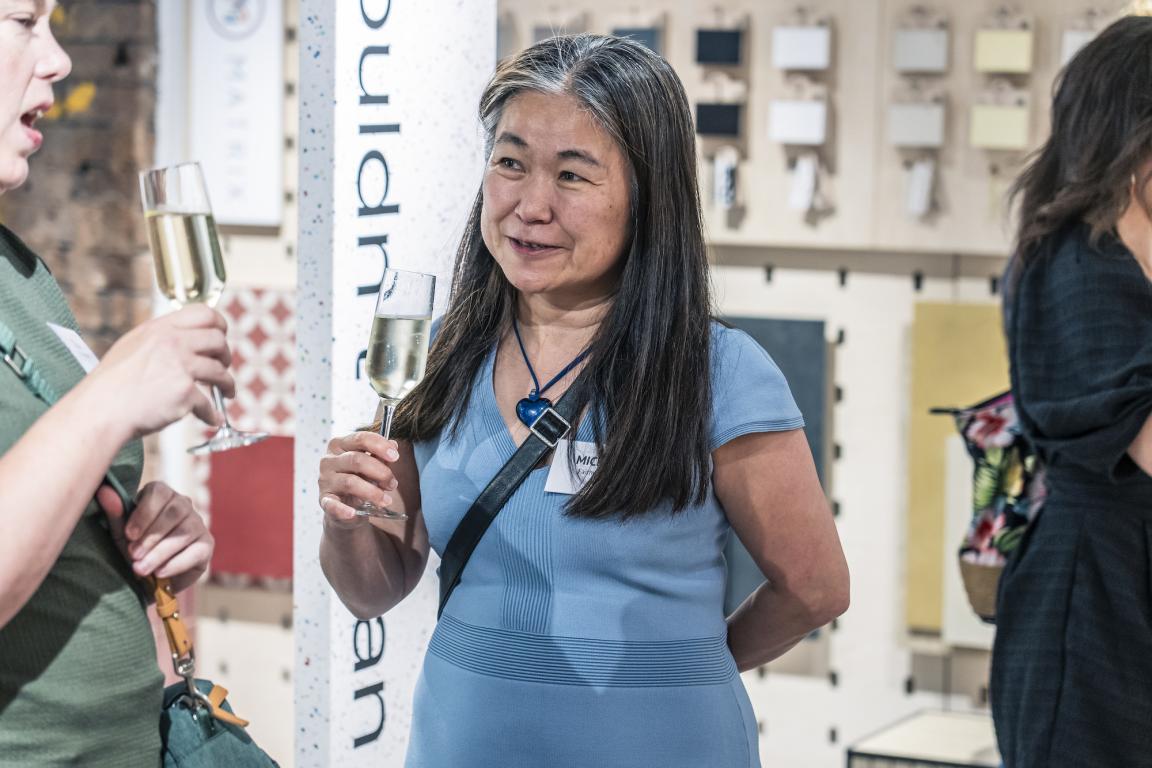
Credit: Tim Ainsworth

Credit: Tim Ainsworth
Payment for intellectual property
John Blakeman, interior designer, JB-ID, brought up a question around intellectual property and the legalities of using AI - a point that's extremely important for architects and designers - creative people in general.
David Edmundson-Bird shared that he's had three instances of stolen intellectual property up to now. "It's a real problem", he said. "We've yet to see the legal case." He also raised the point that AI models have already been trained on "all of our writing" without asking for permission. Plus all the artwork that exists online.
Sharon Muchina, technical CAD designer, Tom Howley, in the audience asked, "If a product or service is free it usually means you're the product. How is AI gathering information from us?"
Phil confirmed this can be the case. "If you're using a 'free' account." Though with a corporate account, he said the information inputted won't be used to "train the model".
"This is part of our general learning with these tools", he added.
David Edmundson-Bird asked the audience, "Who here uses Gmail?" Lots of hands were raised. "Well, that ship sailed a long time ago", he commented, "there are switches you have to dig deep for to ask Gmail not to use your data to train the model inside ChatGPT and Gemini. They're very clear about it."
Do the panellists have any tips for the audience when it comes to this? host David asked. "The only safe computer is the one that's turned off!" answered David Edmundson-Bird.
With the training/output loop in mind, Gary Wolstenholme, associate director, DMWR, asked a question from the audience: "I read that the more we use AI, the facts get diluted?"
"It's called 'AI slop'", said panellist David. "There's a theory that if we fill AI with rubbish, it'll fill the Internet with rubbish and it'll get more and more rubbish over time. But that's not a great use of energy. You've got to train your model. When it gives you a brilliant answer, tell it it's given you a brilliant answer. AI needs humans to assure it."
"AI needs humans to assure it." - David Edmundson-Bird
"To get the best out of these platforms, I would recommend you get some really good training on prompting. When people see the word 'chat' they think conversation. But think of this as a very willing intern that you have got to give instructions to, and tell it your expectations."
Phil went on to say that AI is requiring a behavioural shift - "We spent 25-years putting the least amount of words into Google to get the best response - cafe Northern Quarter - for example. Meeting room Ancoats. And whole businesses are built around that. With AI models, the more articulate you are, the better. Prompting the models is a skill."
From the audience, Nicki Hearne, Nicki Hearne Interior Design, came back to John's previous point around intellectual property, asking the panel the question, “Do you ever feel like you’re overstepping?” in response to her experience of residential clients directly copying others’ work (as opposed to drawing inspiration from it) and, therefore, no longer feeling the need to hire a designer.
The response of “well, it’s happening” seemed to back that up.
David Edmundson-Bird once again stated the importance of "responsible AI" here - "I want it to do the dishes and laundry, not do my job for me", he commented.
"But", he added, this is where 'AI slop' can become a big problem. We need experts there to quality assure outputs."
On this point, he brought up the example of a Swedish fintech company, which backtracked on its customer facing team being solely AI by reverting to a human workforce, suggesting that there will be a period of "disappointment" for those that think AI can work in isolation without the involvement of experts.
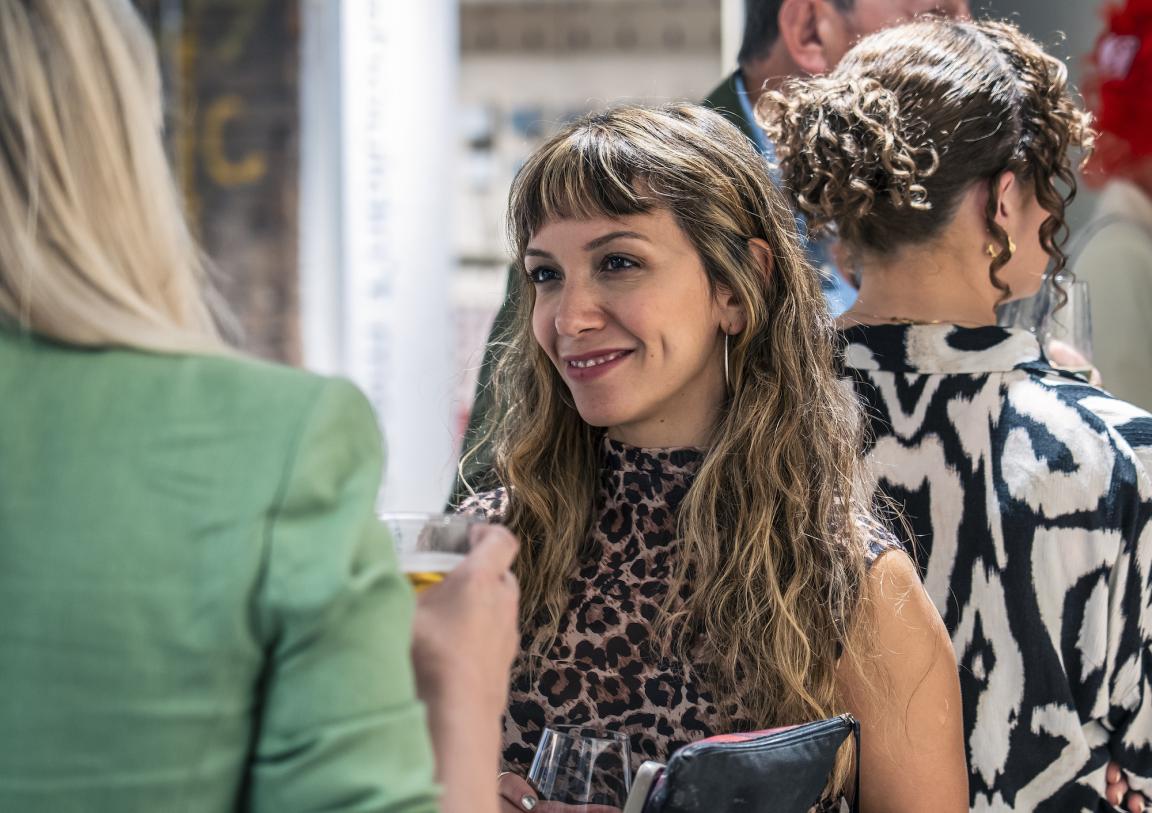
Credit: Tim Ainsworth
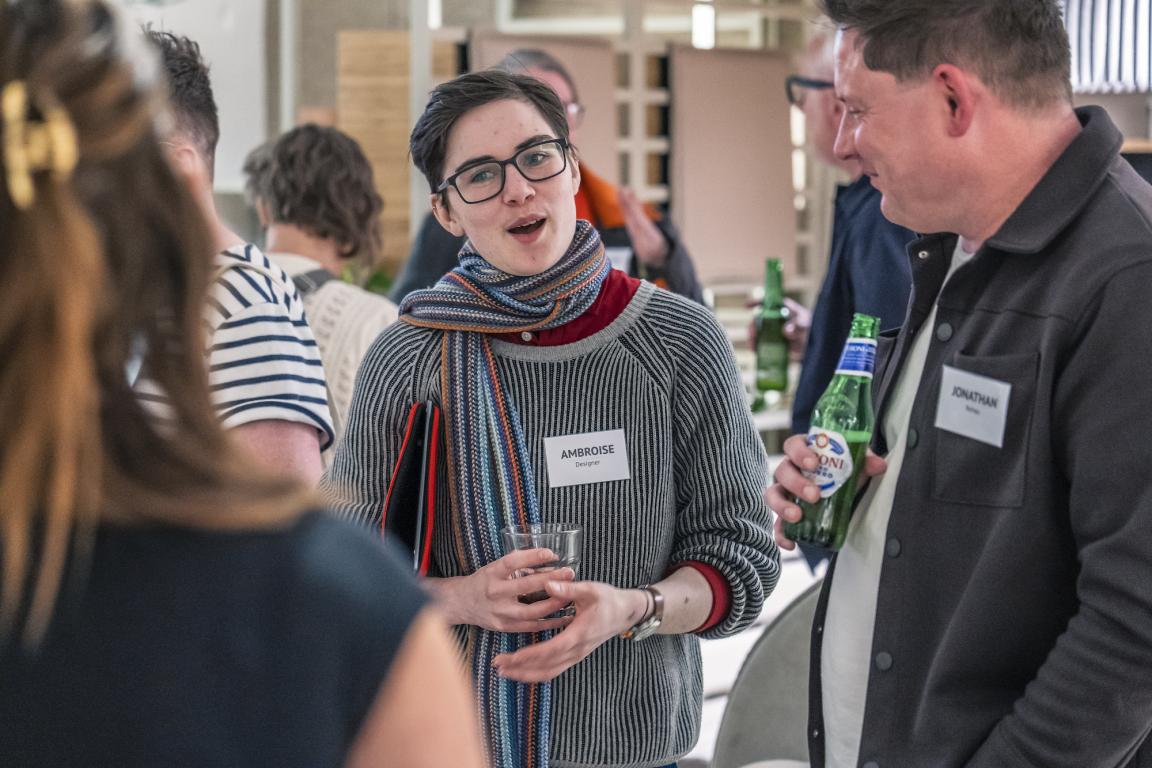
Credit: Tim Ainsworth
Using AI in practice
Honing in specifically on architecture and design, David asked the audience whether they had adopted AI, and if so, what for.
The answers ranged from writing reports from fact-finding interviews to creating renders and models.
"Use AI tools for the stuff that drives you mad." - Phil Birchenall
Atilla Denis, head of innovation, Space Zero, shared their team has used AI to create small-scale software.
"ChatGPT will build a programme on the fly", added David Edmundson-Bird, "and it can save hours and hours of work."
"Will less architects and designers be employed in the future?" David Smalley asked.
"No - but they'll spend more time being architects and designers", said David Edmundson-Bird, "and less doing life-draining tasks."
But can we fully trust the data AI returns? Not always, shared Phil. Models "hallucinate" when they don't have enough information - in effect, filling in the gaps themselves. "It will lie convincingly. And we have to be aware of this. This is why we need assurance from critical thinkers. Just in the same way if I gave a job to a new colleague I'd check their work too.
"The new models are far better than they were though."
Bringing the conversation to a close, for now - it continues in Glasgow next month with David and Phil once again joining David Smalley on stage to take a deeper dive into the topic of AI - the panel were asked to leave the audience with one piece of advice each.
"For me, experiment, evaluate", answered Phil.
And from David, "Use it as an additive, not as a supplantive."
In summary of the session:
- AI won't replace people, but people with AI will replace those without
- AI is not intelligent or creative
- Let AI do the 'grunt' work so you can focus on other things.
If you'd like to sign up for the session in Glasgow - AI: Catalyst for innovation, or disruptive force - click here. And in the meantime, a huge thank you to our guests, our panel, and to our supporters for this event, Agua Fabrics, Autex, Rehau - all Partners at Material Source Studio.


